whitepaper v2
ecologies of collaboration
& collective practice in electronic music
with CLMxGUN
essay - writing and graphic design
2022
essay - writing and graphic design
2022
The Whitepaper V2 is the continuation of CLM x GUN Whitepaper. This first version seeked to introduce our vision and to lay the foundation of our upcoming activities. It presented how the music industry and related artistic practices had been shaped by the evolution of techniques and technologies - changing the way music is produced, distributed and experienced - and therefore redefining the traditional figure of the artist, inscribing the individual in various networks and its inescapable entangling with collective practices.
Drawing inspiration from the open-source and free software movements, the Whitepaper V1 introduced the basis of what we defined as an open-source and collaborative music label, trying to draw lines at what could be our own structure and what would be our core values and operating principles, as a complementary approach to traditional structures of major or independent music labels. In 2022, the context surely is very different, but we’re still animated by the same core questions : how can we think of collaboration and collective action in creating musical and artistic content?
More a continuation than an update, this Whitepaper V2 delves deeper into our interrogations and learnings, first by presenting our thoughts about the role, difficulties and importance of independent labels in the current context, as well as presenting our advances with the CLM x GUN project and how it is operated, in a much more detailed and practical way. More a logbook than a manifesto, the purpose of this document is twofold. On a personal level, its existence helps us to lay a cornerstone in our adventure, taking the time to reflect back on our activity and putting some words on abstract concepts, intuitive decisions and empiric processes that emerged during the past few years of activity. But above all, it aims to be a useful tool for anyone sharing the same interrogations, with the hope that exposing our learnings, our practical solutions as well as our mistakes and deceptions will be able to help the creation of improved models and better collective organizations - a compass that we hope can help navigate our troubling times.




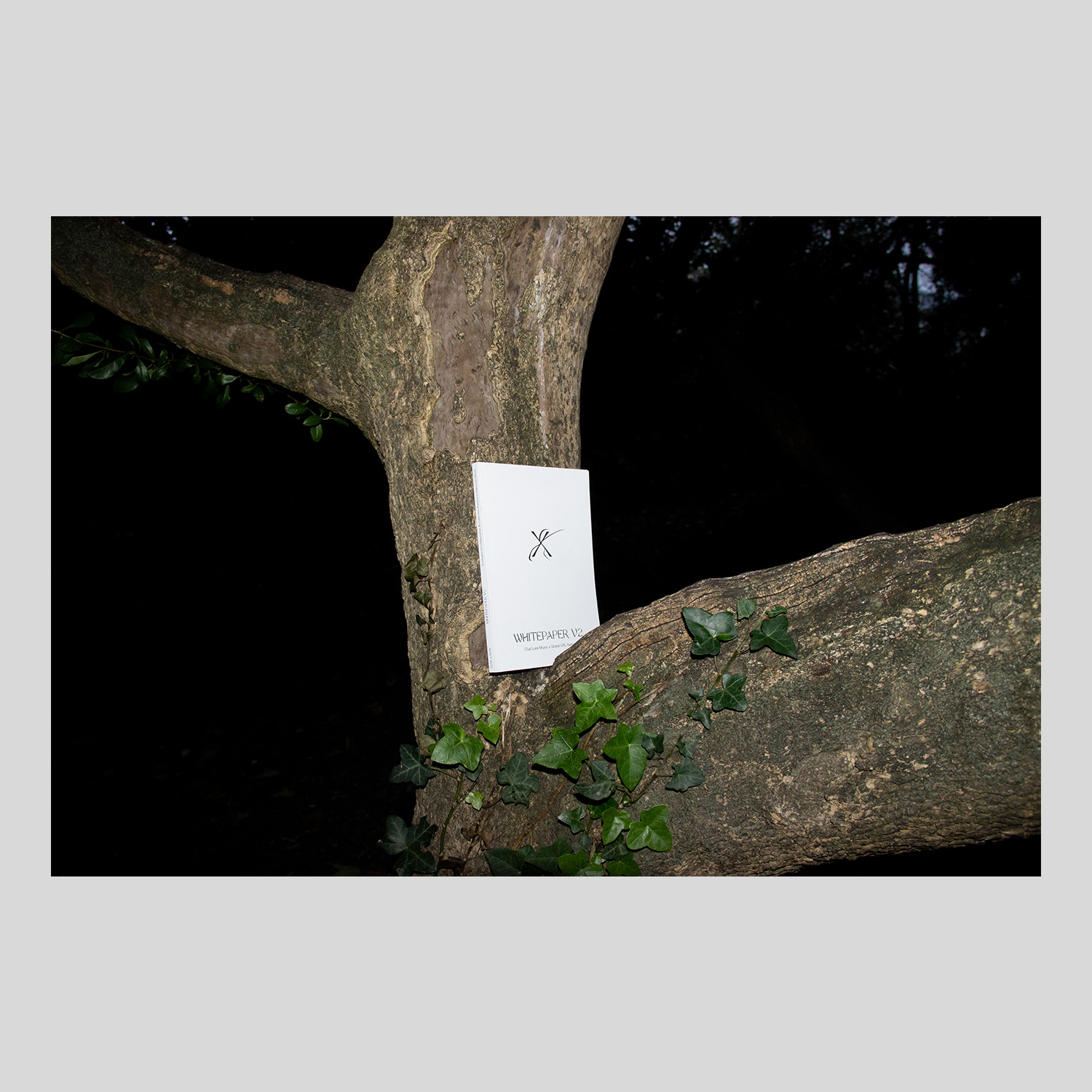

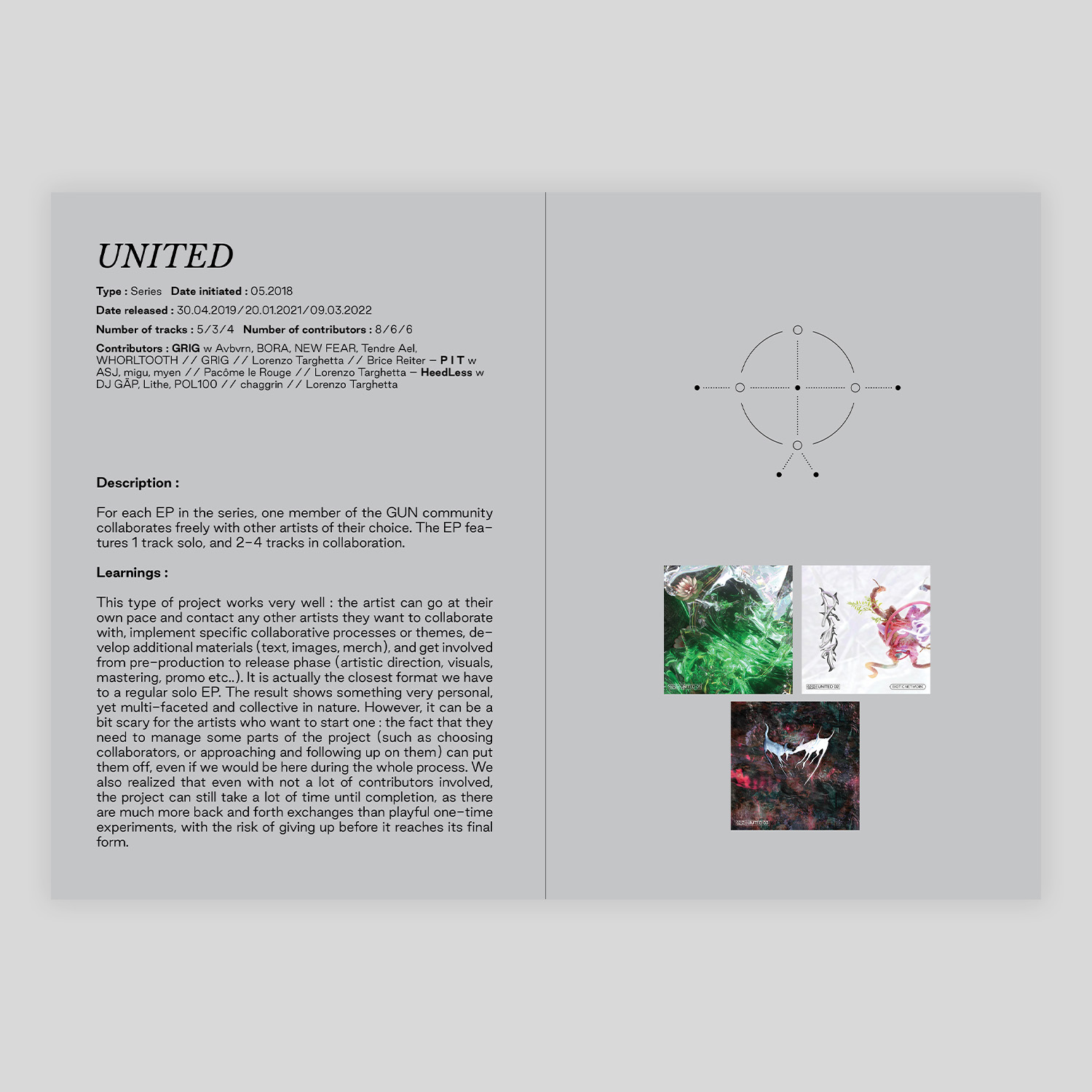



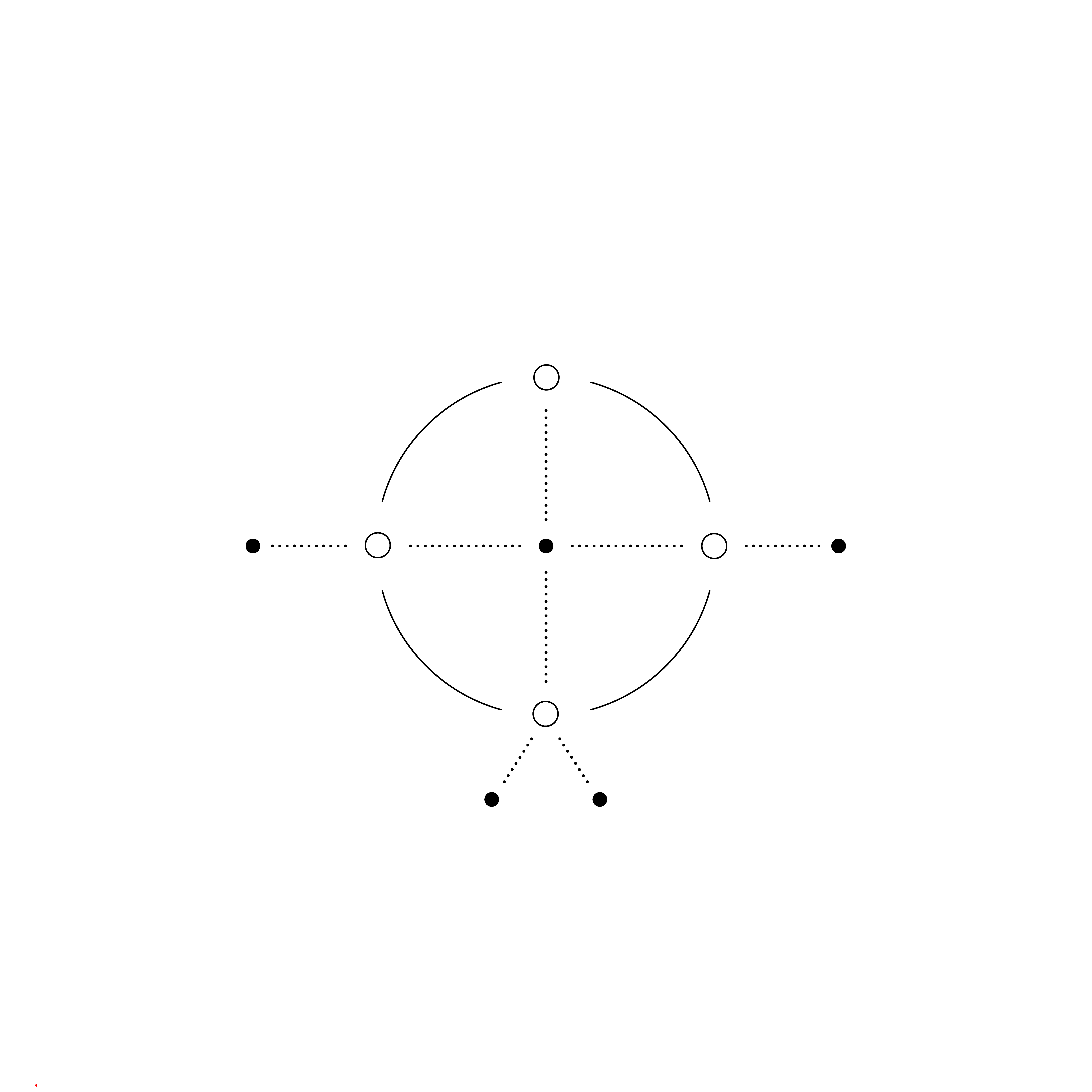


hyperwwwork
towards a labor without work : the spatial logics of soft-production
with Romain Curnier
Master of Architecture diploma project
Supervisors : Mario Carpo, Jeremy Lecomte, Christian Girard
ENSAPM 2018
Master of Architecture diploma project
Supervisors : Mario Carpo, Jeremy Lecomte, Christian Girard
ENSAPM 2018
More than a representation of
power and capital, the workplace and its spatial organization principles
act as a mechanism of value production.1,2
Since its birth in the late 18th century, the white-collar workplace
has evolved in response to particular technological innovations, social
ecosystems, workers struggle and design principles.3
However, the recent development of information and communication technology - and especially the ubiquity of the network - tend increasingly to blur the differentiation between workplace and domestic space, work and leisure, production and consumption. While network information economy transformed manual labor into cognitive labor,4 the Internet of Things and large-scale adoption of smart objects participate in the creation of a spatialized information economy. We are currently witnessing the rise of a new kind of space of indeterminate nature, in which every daily action that can be recorded, analyzed and used by third parties eventually creates value,5 consciously or unconsciously, in the name of efficiency and well-being. In this context, commodification of the self and every aspect of one’s life are facilitated by an increasing panel of high-resolution smart objects and technologies such as the blockchain and machine learning, invoking a complex mesh of technical, social and political actors.6
The hyperwwwork project, through the analysis of architectural plans spanning over two centuries and prospective fictional thinking, sheds light on these existing phenomena otherwise hardly perceived. Inspired by the caricatural approach of Superstudio,7 “Twelve Ideal Offices” invites one to take a step back so as to evaluate the consequence and the risks of the implementation of smart technologies by focusing on spaces, interactions and behaviors usually not associated with value production or mechanisms of control. hyperwwwork thus extrapolates a social, technical and architectonic context in which these technologies are embedded, and seeks to reveal the role of architecture in this new paradigm and its corresponding trends, such as the quantified self, custom space experience, decentralization and 24/7 activity.
1. Pier Vittorio Aureli, “The Barest Form in which Architecture Can Exist”, in A-TYPICAL PLAN : Projects and Essays on Identity, Flexibility and Atmosphere in the Office, edited by Jeannette Kuo (Zurich: Park Books, 2013).
2. Rem Koolhaas and Bruce Mau, « Typical Plan », in S, M, L, XL (New York: Monacelli Press, 1995), pp 334-353.
3. Nikil Saval, Cubed : A Secret History of the Workplace (New York: Anchor Books, 2014).
4. André Gorz, L’immatériel : Connaissance, valeur et capital (Paris: Galilée, 2003).
5. Nick Srnicek, Platform Capitalism (Cambridge, UK: Polity Press, 2017).
6. Adam Greenfield, Radical Technologies : The Design of Everyday Life. (London / NY: Verso, 2017).
7. Superstudio, « Twelve Cautionary Tales for Christmas (12 Ideal Cities) », in Architectural Design, AD #12, Standard Catalogue Co. / Academy Editions, 1971.
︎︎︎ More : hyperwwwork.life
Features :
︎︎︎ Atlas of Places, edited by Thomas Paturet. Web, August 2018
︎︎︎ Prix 2018 des meilleurs PFE de la Maison de l’architecture Ile-de-France. November 2018.
︎︎︎ WASH magazine, issue 02 : Definitely post-something. Print/Web, Fall 2018.
Papers & publications :
︎︎︎ "Hyperwwork, Twelve Ideal Offices Towards a Labor Without Work"
in isthisit? issue 05, edited by Bob Bicknell-Knight. London, August 2018.
︎︎︎ "Hyperwwork: Is Alexa our new Chief Happiness Officer? IoT and the Logics of Soft-Production" in Smartness? Between discourse and practice, 15th Architectural Humanities Reseach Association International Conference. TU Eindhoven, Netherlands, 15th-17th November 2018.
︎︎︎ "Hyperwwork: Is Alexa our new Chief Happiness Officer? IoT and the Logics of Soft-Production" in Architecture and the Smart City, edited by Sergio M. Figueiredo, Sukanya Krishnamurthy, Torsten Schroeder.
Routledge : New York, 2019.
︎︎︎ "Hyperwwwork : Twelve Ideal Offices" in Deep City : Climate Crisis, Democracy and the Digital International Latsis Symposium - Open Forum. EPFL, Switzerland, 24th-26th March 2021
However, the recent development of information and communication technology - and especially the ubiquity of the network - tend increasingly to blur the differentiation between workplace and domestic space, work and leisure, production and consumption. While network information economy transformed manual labor into cognitive labor,4 the Internet of Things and large-scale adoption of smart objects participate in the creation of a spatialized information economy. We are currently witnessing the rise of a new kind of space of indeterminate nature, in which every daily action that can be recorded, analyzed and used by third parties eventually creates value,5 consciously or unconsciously, in the name of efficiency and well-being. In this context, commodification of the self and every aspect of one’s life are facilitated by an increasing panel of high-resolution smart objects and technologies such as the blockchain and machine learning, invoking a complex mesh of technical, social and political actors.6
The hyperwwwork project, through the analysis of architectural plans spanning over two centuries and prospective fictional thinking, sheds light on these existing phenomena otherwise hardly perceived. Inspired by the caricatural approach of Superstudio,7 “Twelve Ideal Offices” invites one to take a step back so as to evaluate the consequence and the risks of the implementation of smart technologies by focusing on spaces, interactions and behaviors usually not associated with value production or mechanisms of control. hyperwwwork thus extrapolates a social, technical and architectonic context in which these technologies are embedded, and seeks to reveal the role of architecture in this new paradigm and its corresponding trends, such as the quantified self, custom space experience, decentralization and 24/7 activity.
1. Pier Vittorio Aureli, “The Barest Form in which Architecture Can Exist”, in A-TYPICAL PLAN : Projects and Essays on Identity, Flexibility and Atmosphere in the Office, edited by Jeannette Kuo (Zurich: Park Books, 2013).
2. Rem Koolhaas and Bruce Mau, « Typical Plan », in S, M, L, XL (New York: Monacelli Press, 1995), pp 334-353.
3. Nikil Saval, Cubed : A Secret History of the Workplace (New York: Anchor Books, 2014).
4. André Gorz, L’immatériel : Connaissance, valeur et capital (Paris: Galilée, 2003).
5. Nick Srnicek, Platform Capitalism (Cambridge, UK: Polity Press, 2017).
6. Adam Greenfield, Radical Technologies : The Design of Everyday Life. (London / NY: Verso, 2017).
7. Superstudio, « Twelve Cautionary Tales for Christmas (12 Ideal Cities) », in Architectural Design, AD #12, Standard Catalogue Co. / Academy Editions, 1971.
︎︎︎ More : hyperwwwork.life
Features :
︎︎︎ Atlas of Places, edited by Thomas Paturet. Web, August 2018
︎︎︎ Prix 2018 des meilleurs PFE de la Maison de l’architecture Ile-de-France. November 2018.
︎︎︎ WASH magazine, issue 02 : Definitely post-something. Print/Web, Fall 2018.
Papers & publications :
︎︎︎ "Hyperwwork, Twelve Ideal Offices Towards a Labor Without Work"
in isthisit? issue 05, edited by Bob Bicknell-Knight. London, August 2018.
︎︎︎ "Hyperwwork: Is Alexa our new Chief Happiness Officer? IoT and the Logics of Soft-Production" in Smartness? Between discourse and practice, 15th Architectural Humanities Reseach Association International Conference. TU Eindhoven, Netherlands, 15th-17th November 2018.
︎︎︎ "Hyperwwork: Is Alexa our new Chief Happiness Officer? IoT and the Logics of Soft-Production" in Architecture and the Smart City, edited by Sergio M. Figueiredo, Sukanya Krishnamurthy, Torsten Schroeder.
Routledge : New York, 2019.
︎︎︎ "Hyperwwwork : Twelve Ideal Offices" in Deep City : Climate Crisis, Democracy and the Digital International Latsis Symposium - Open Forum. EPFL, Switzerland, 24th-26th March 2021

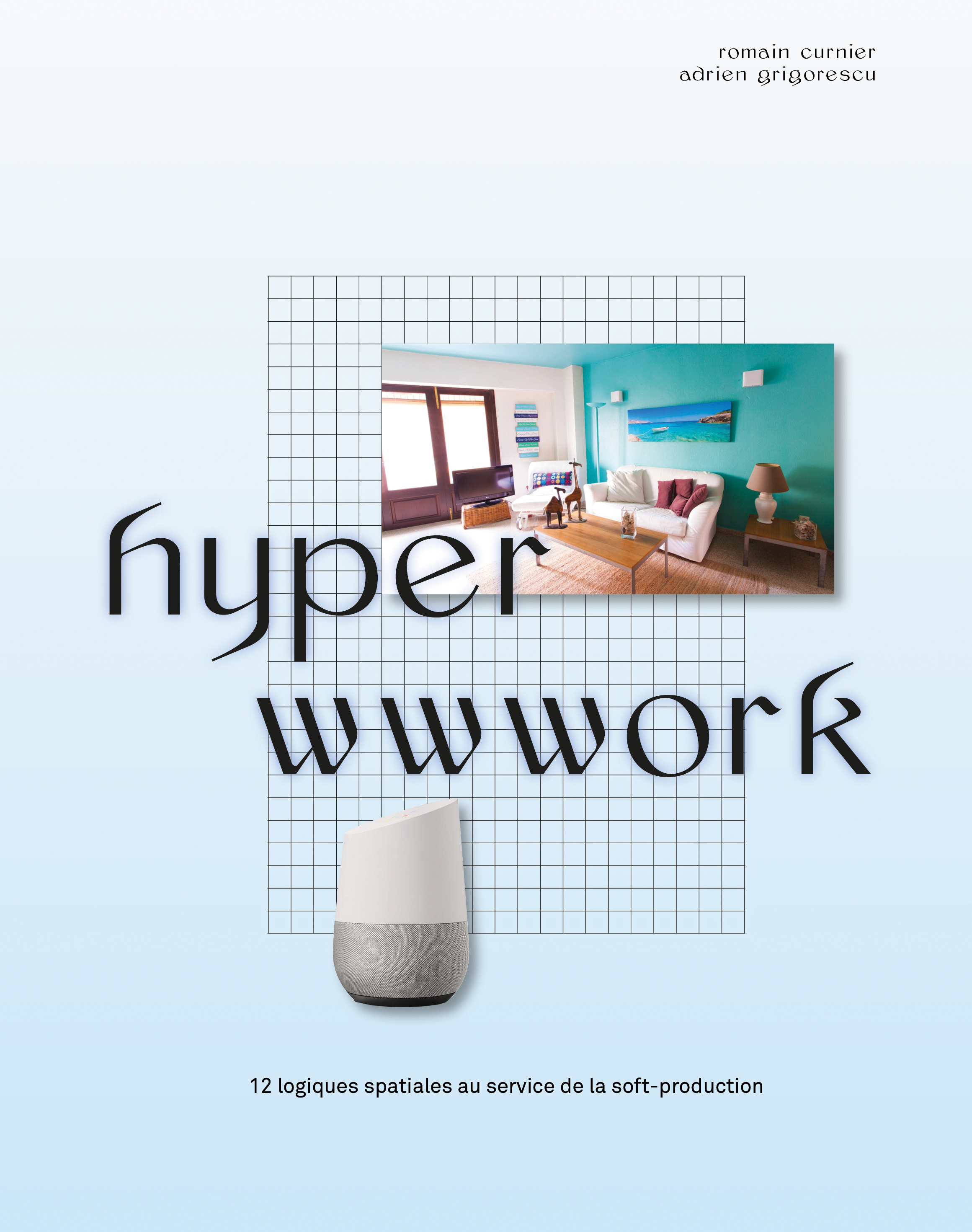
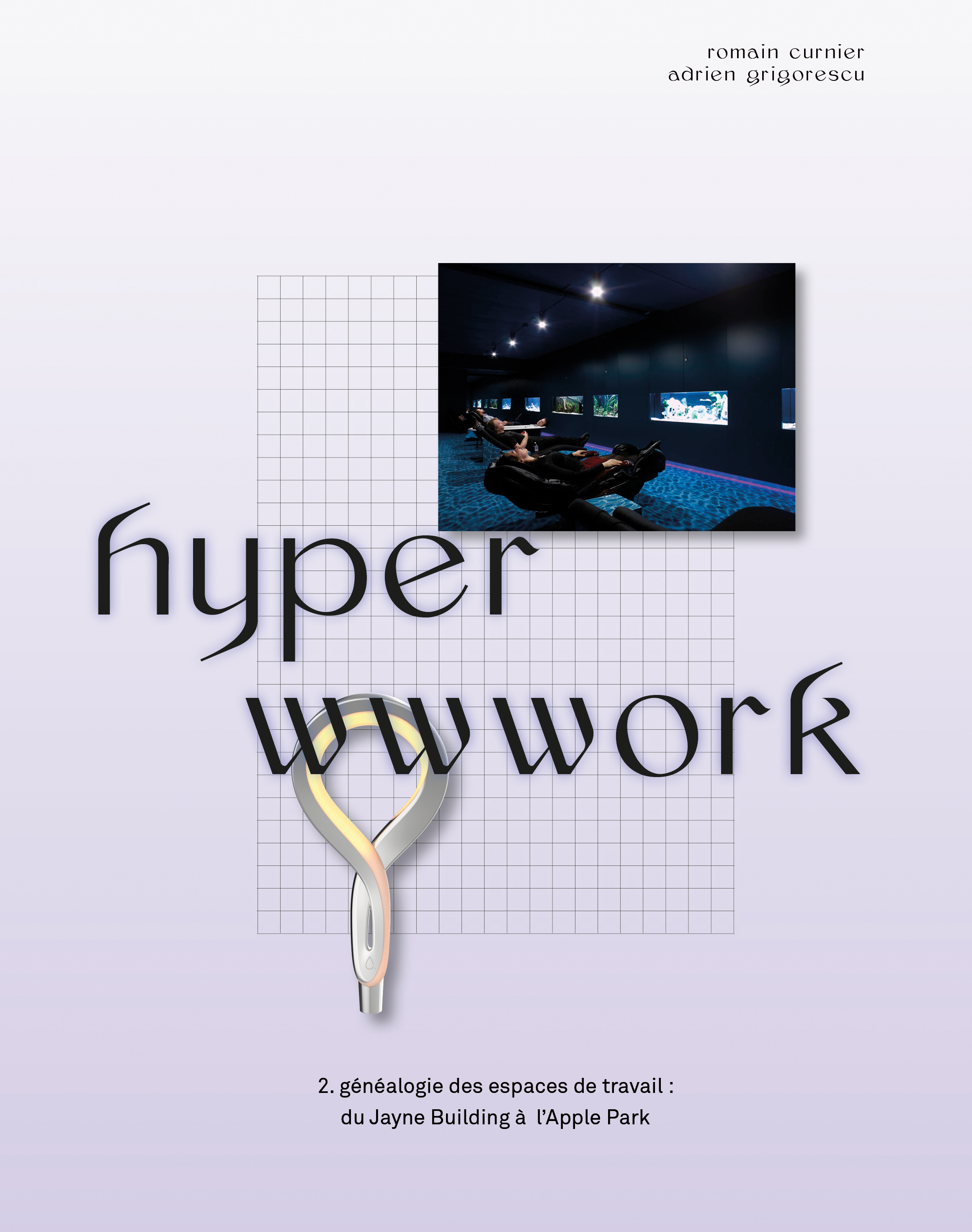

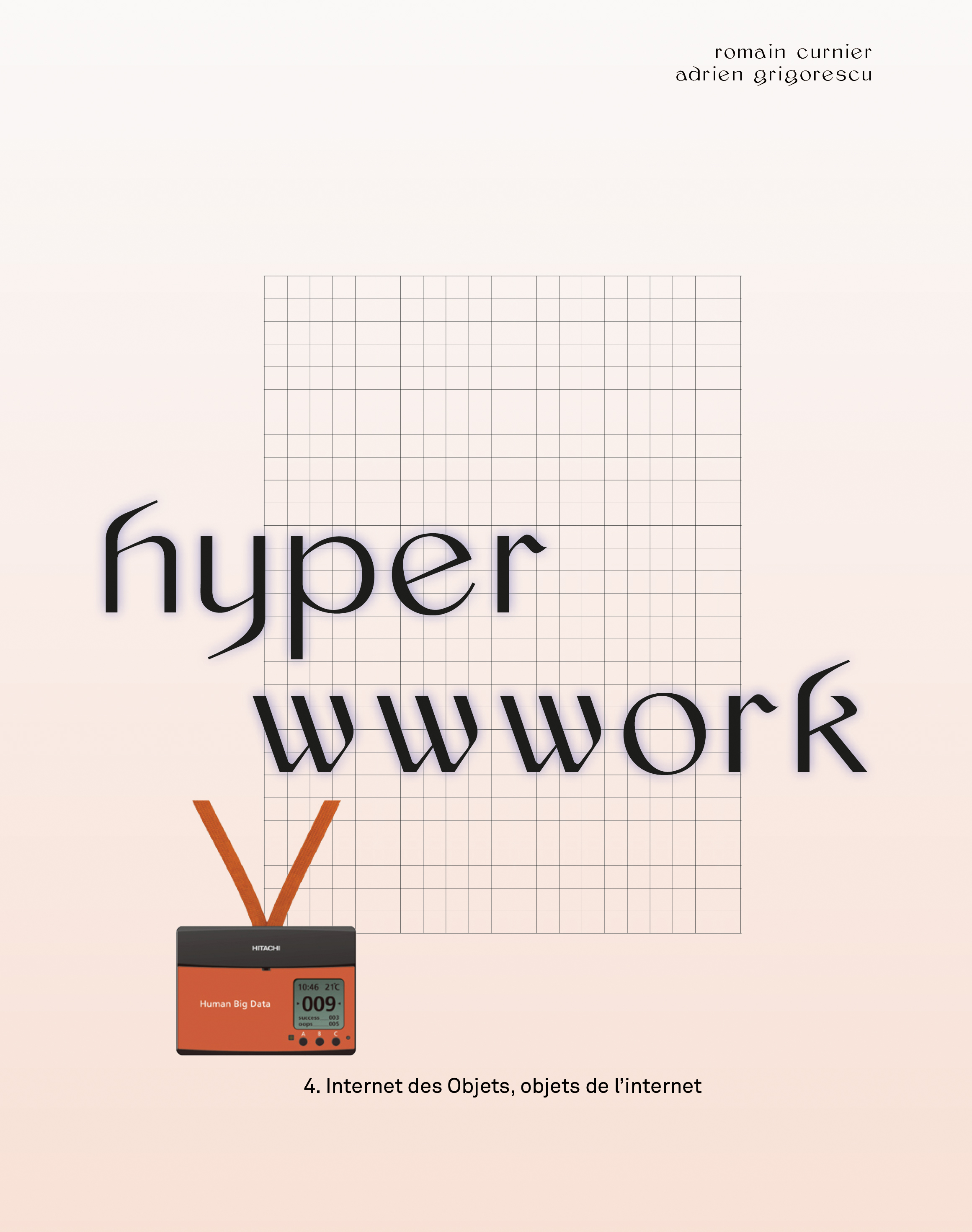
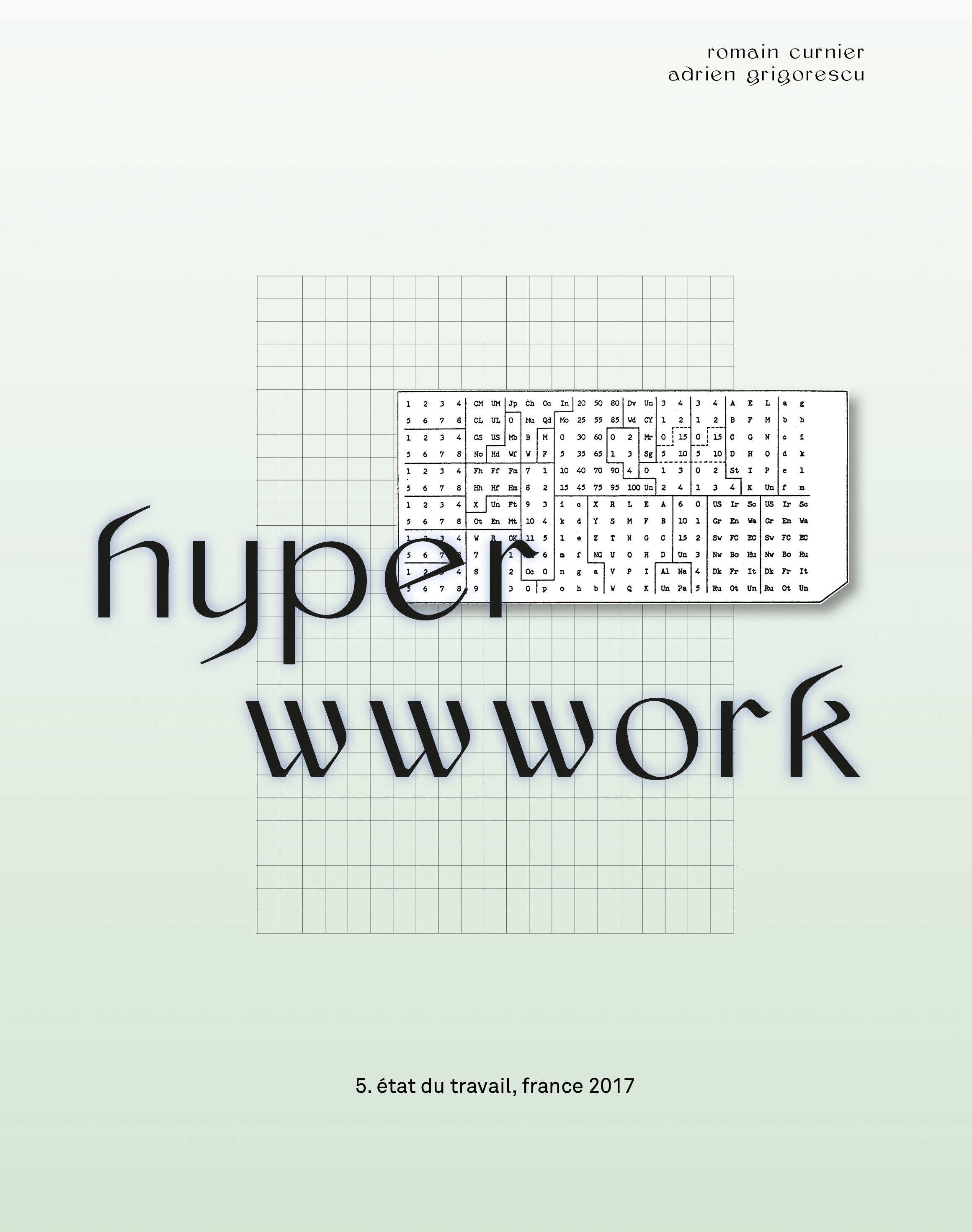

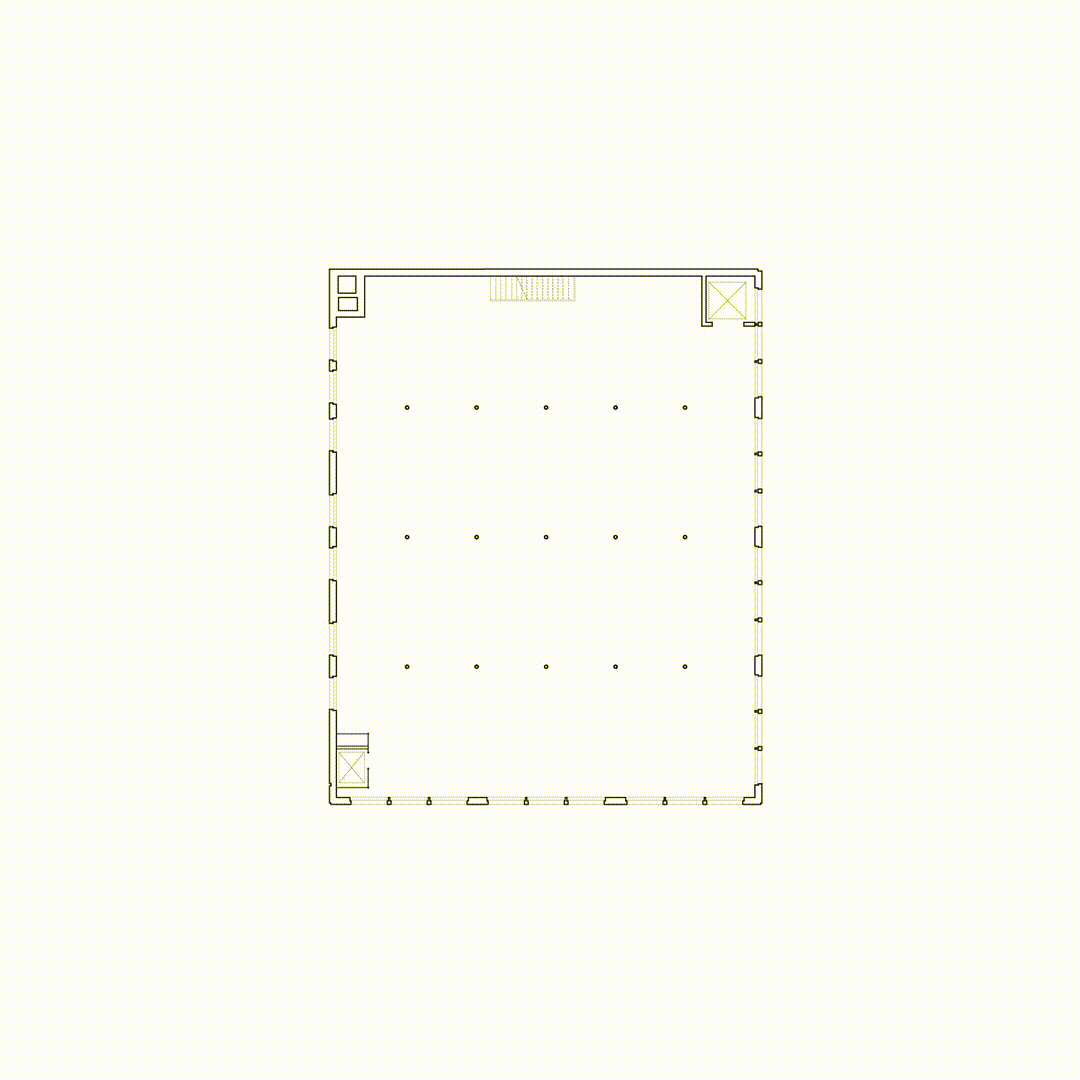

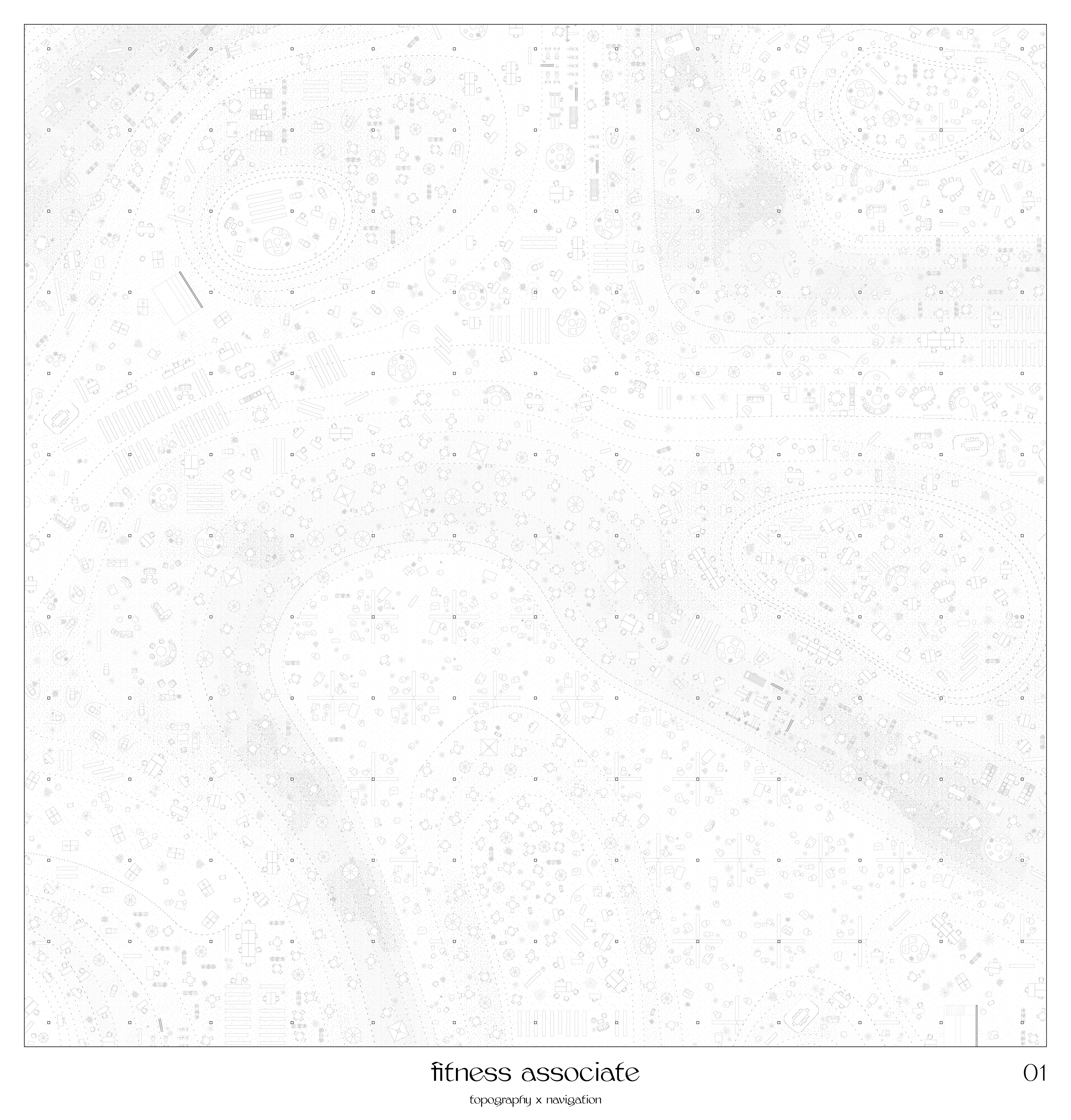

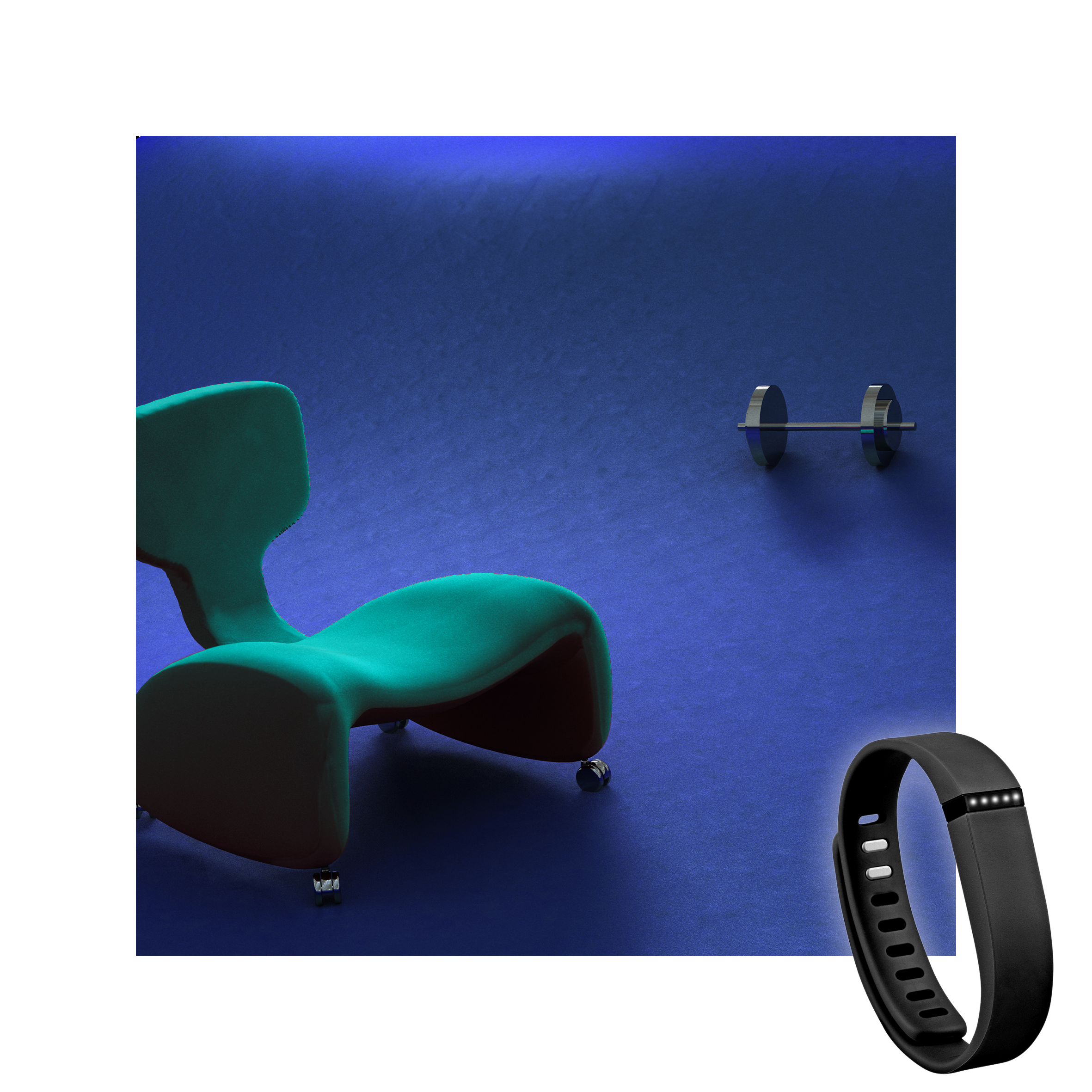


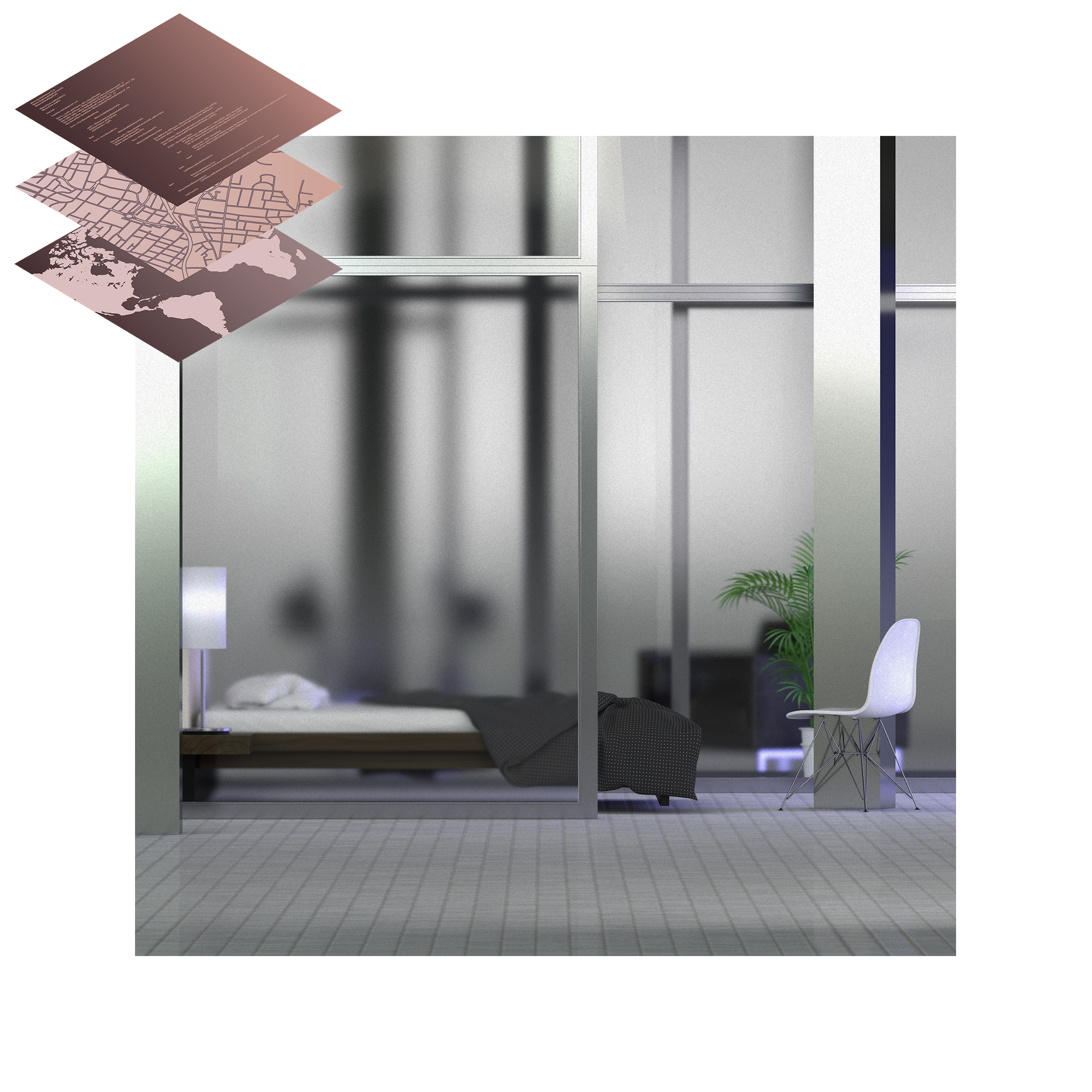
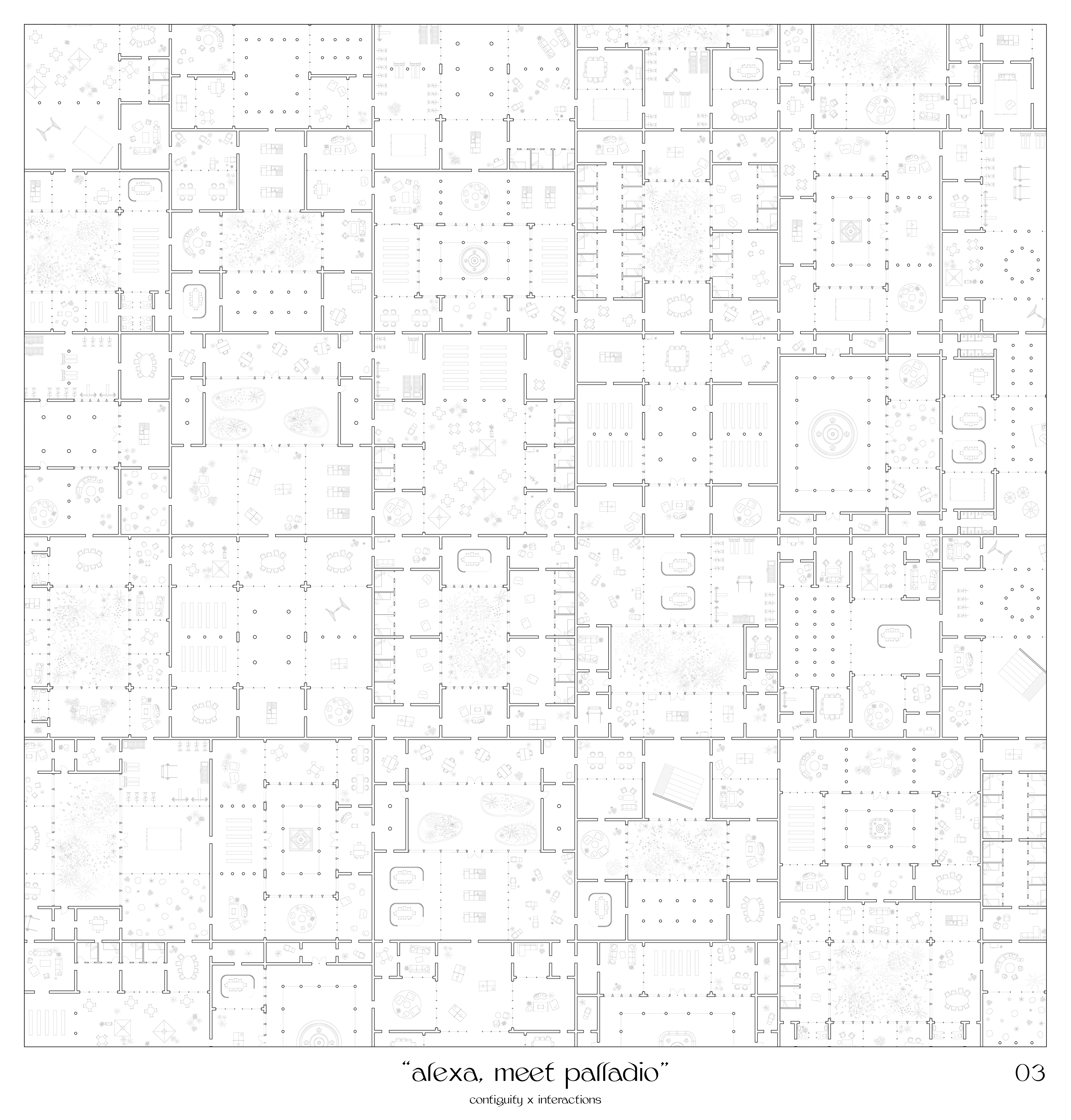
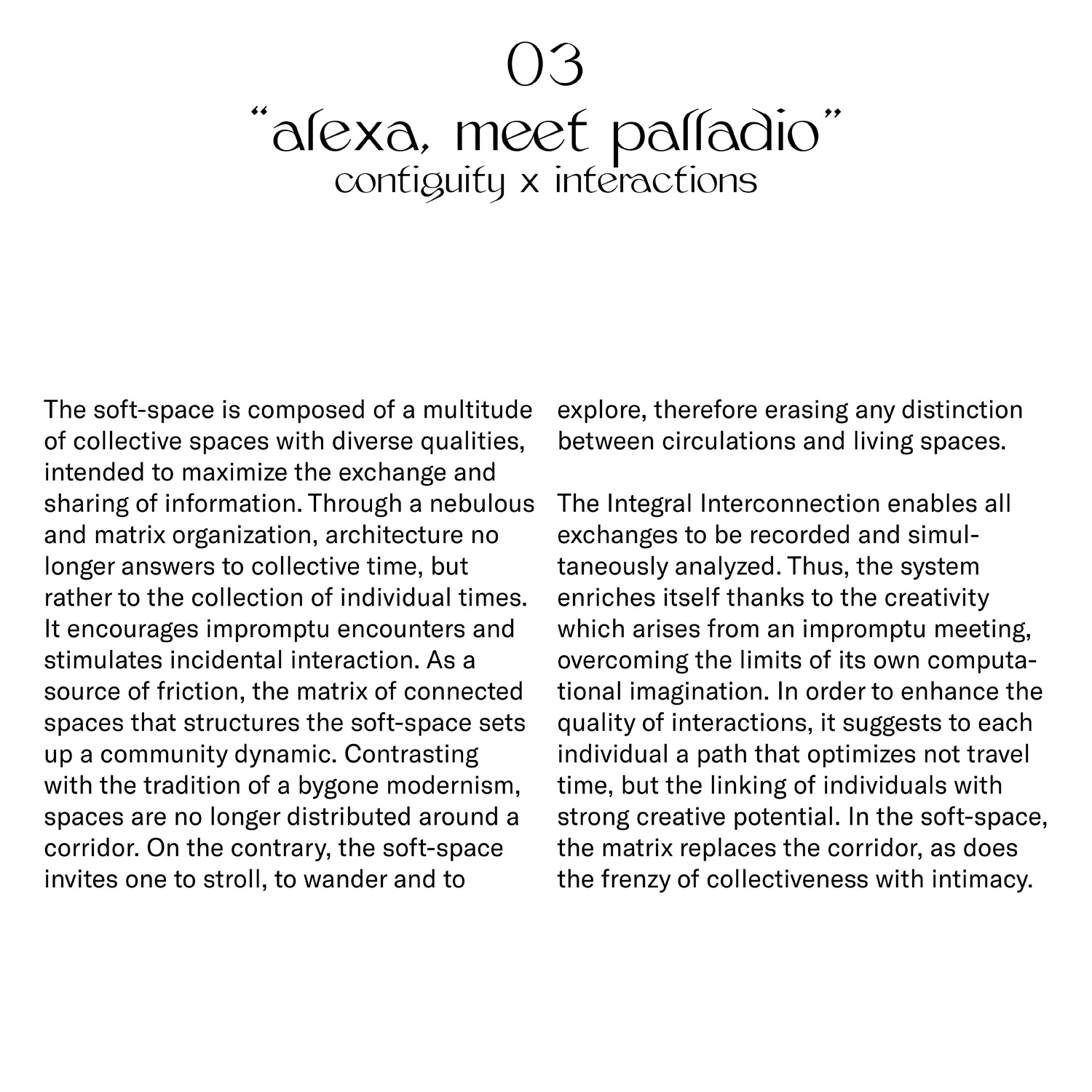

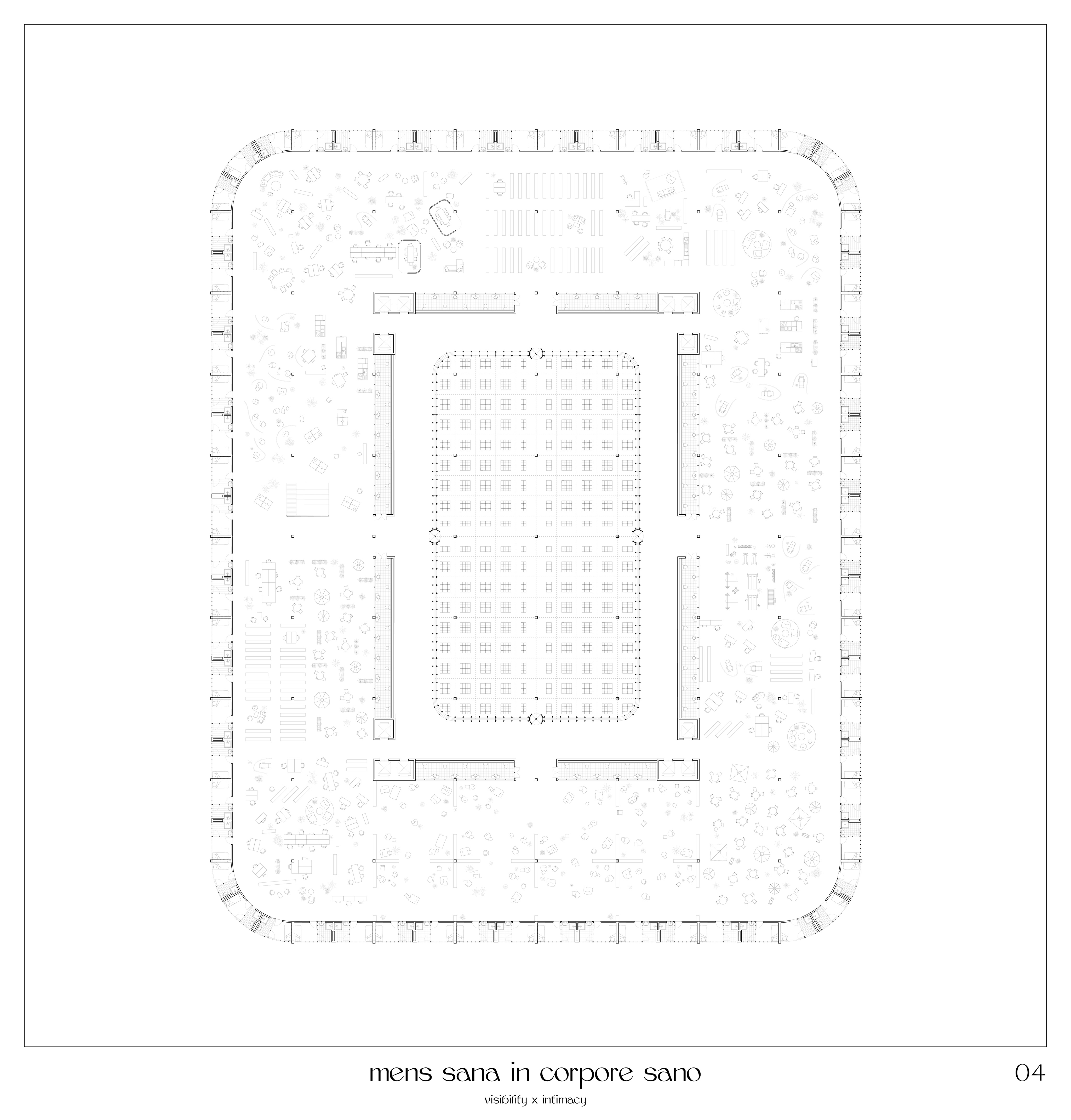

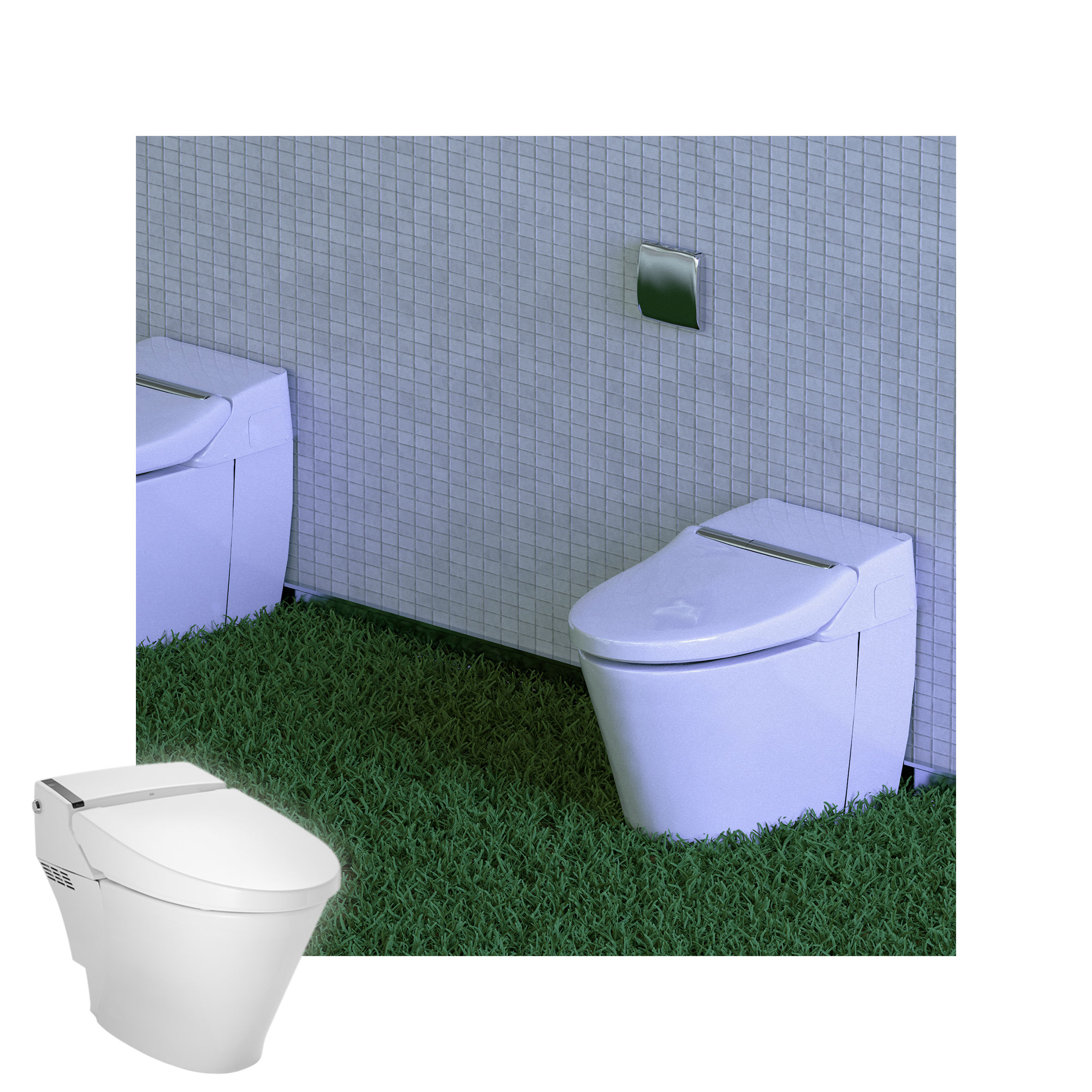
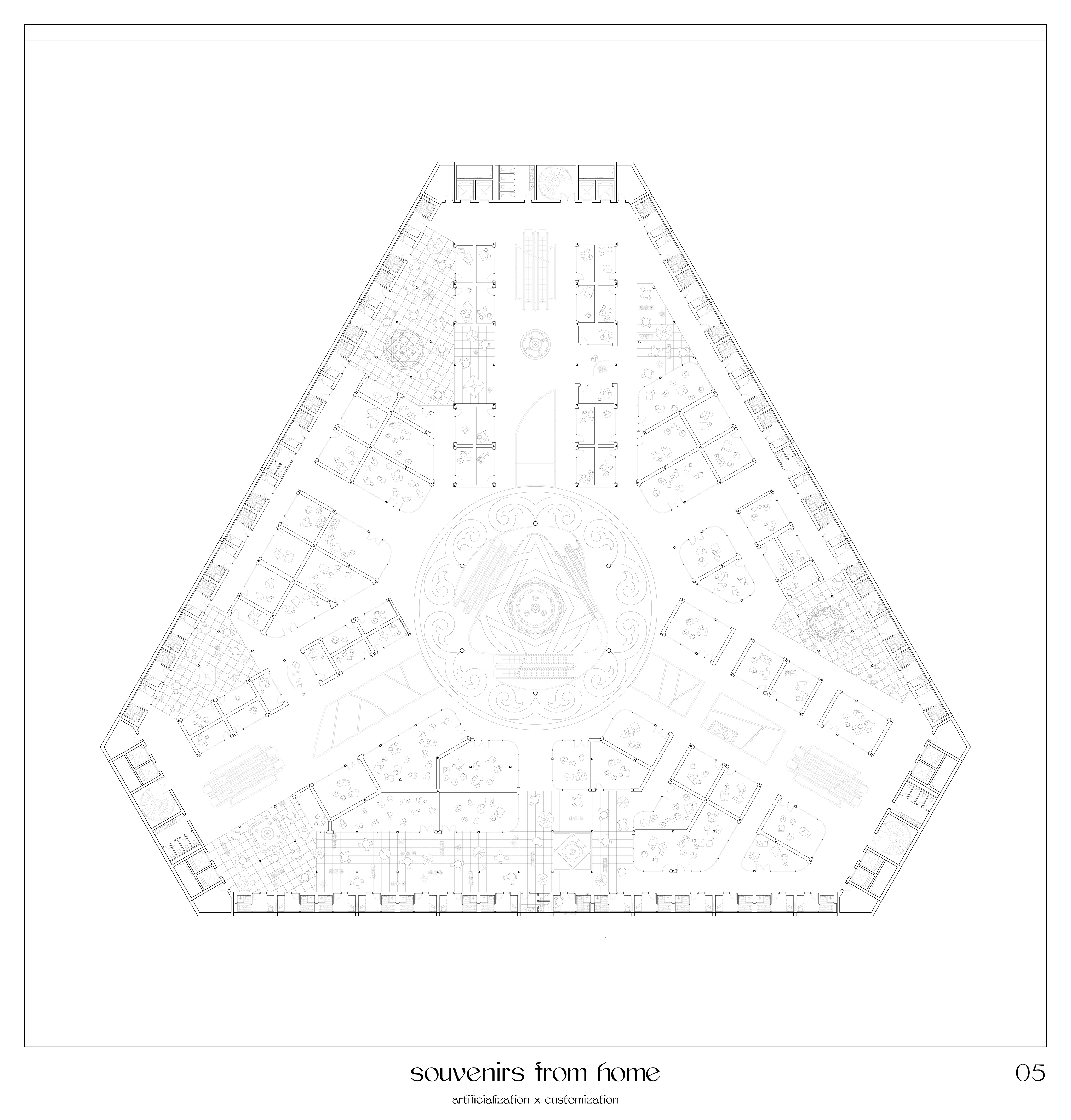

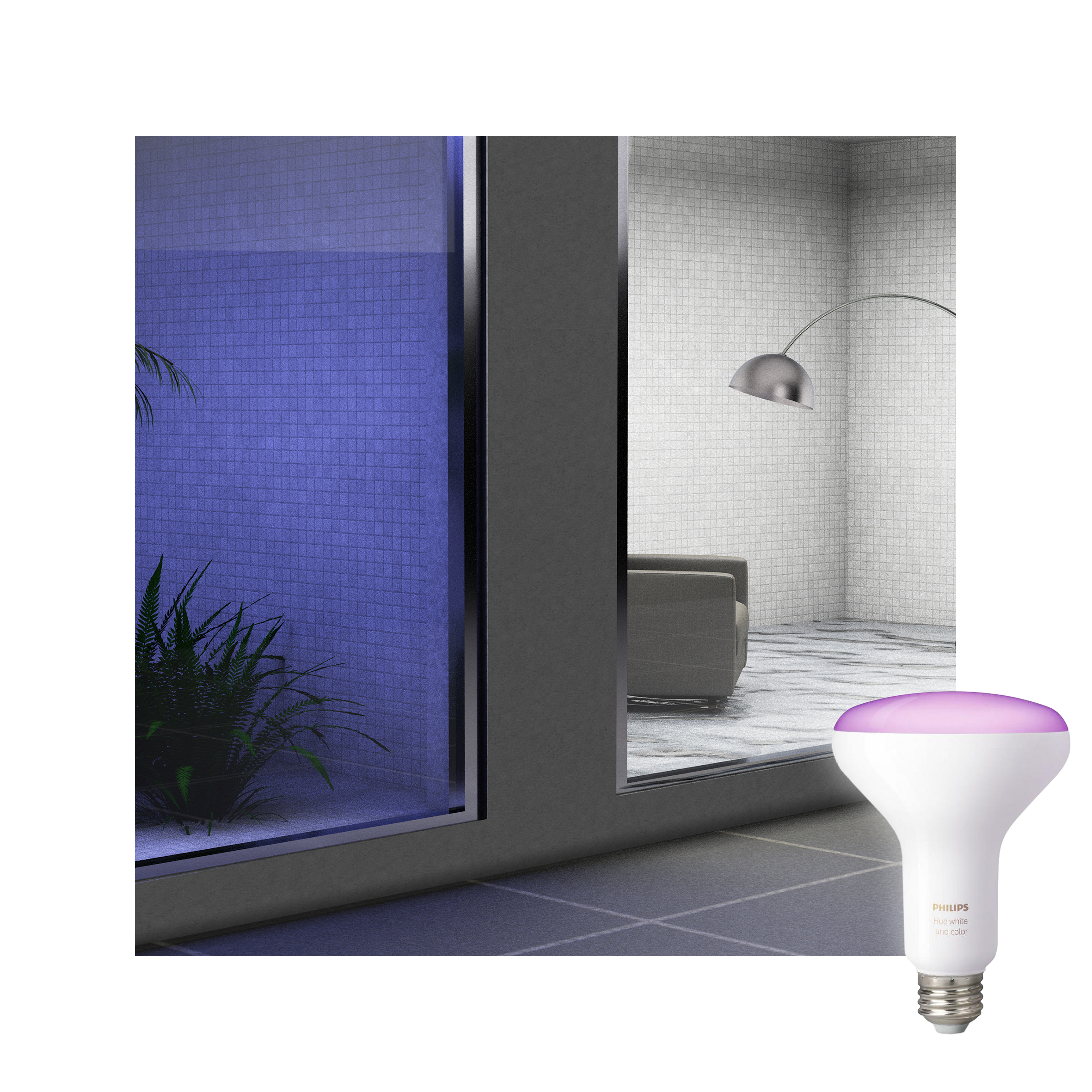
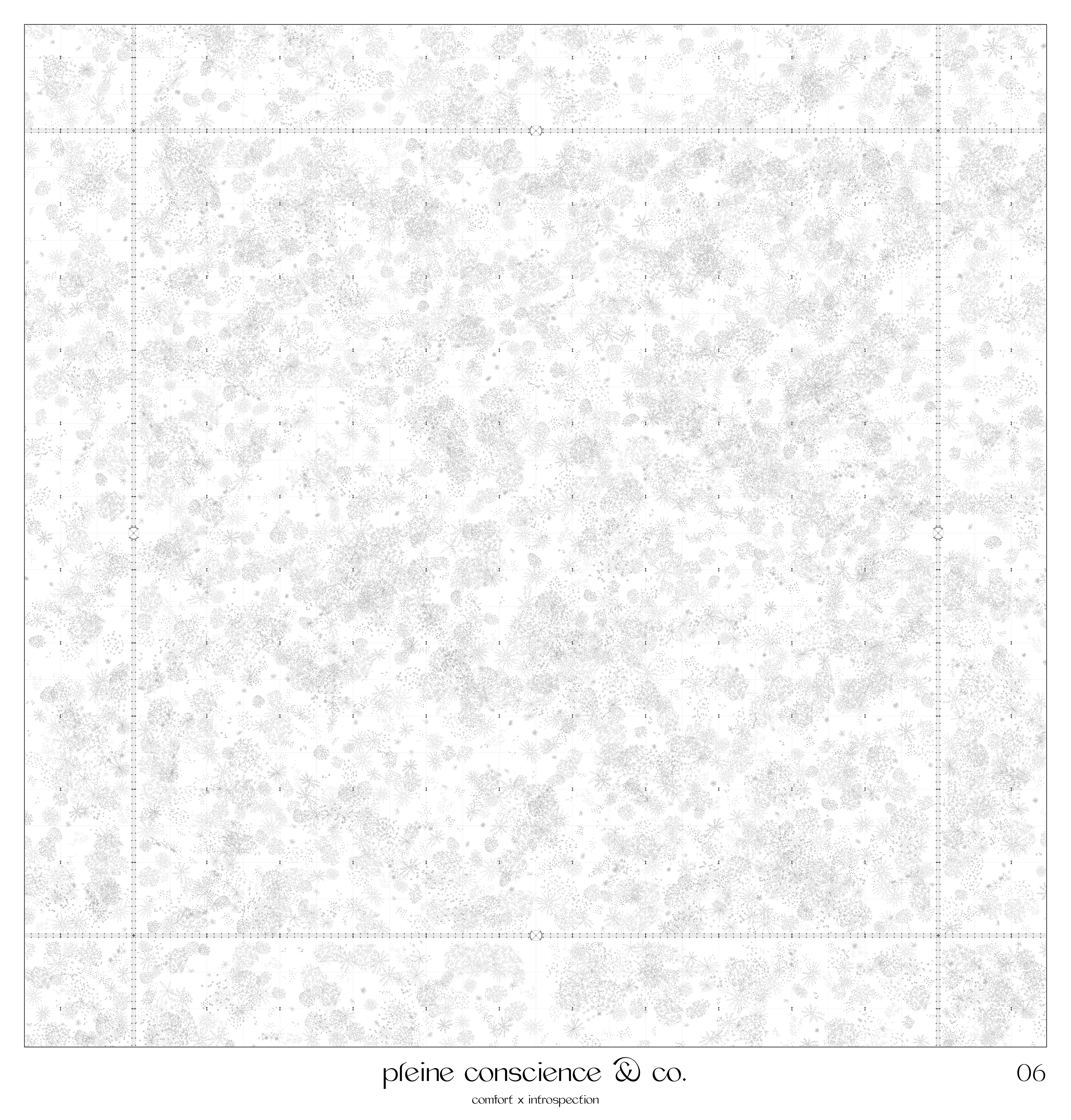

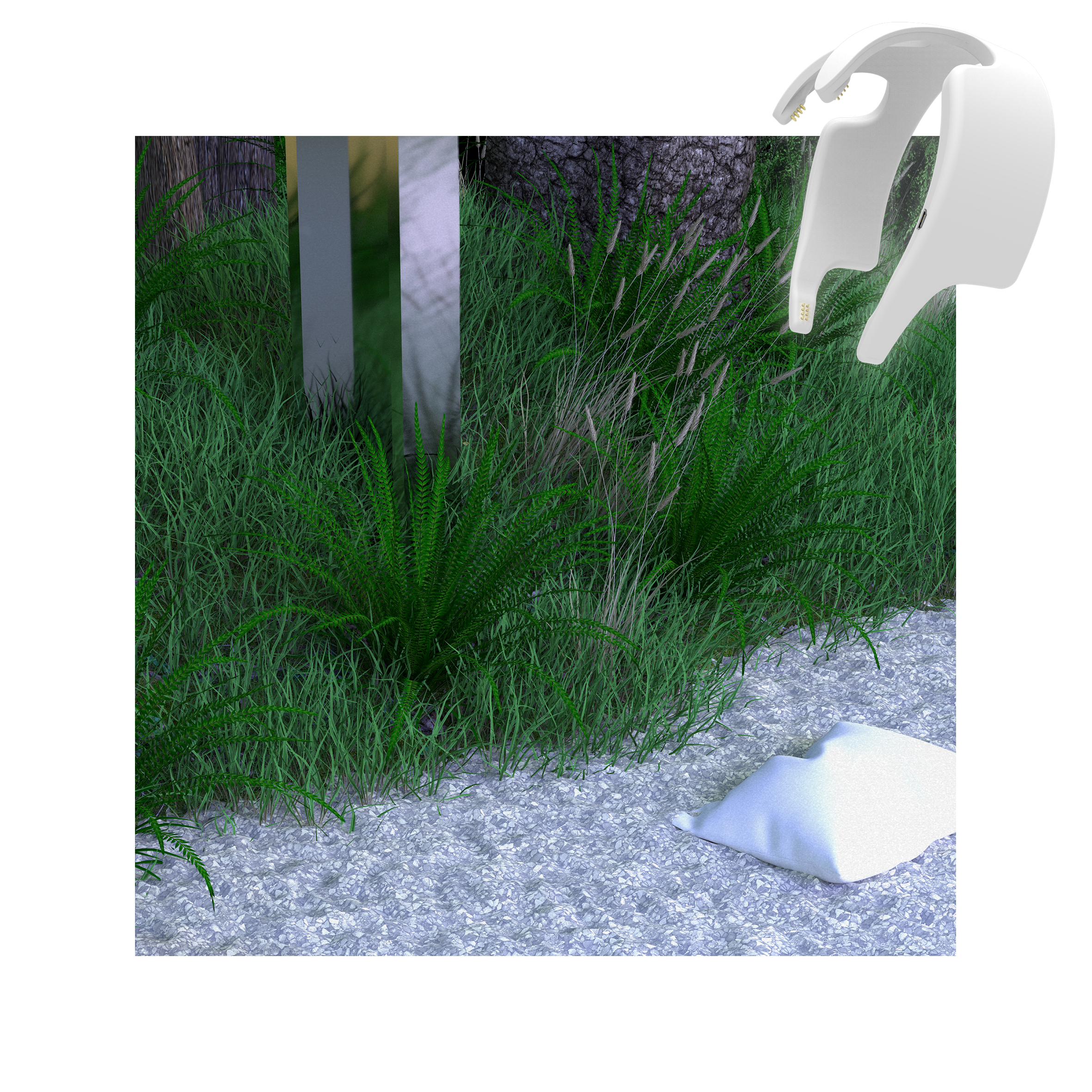
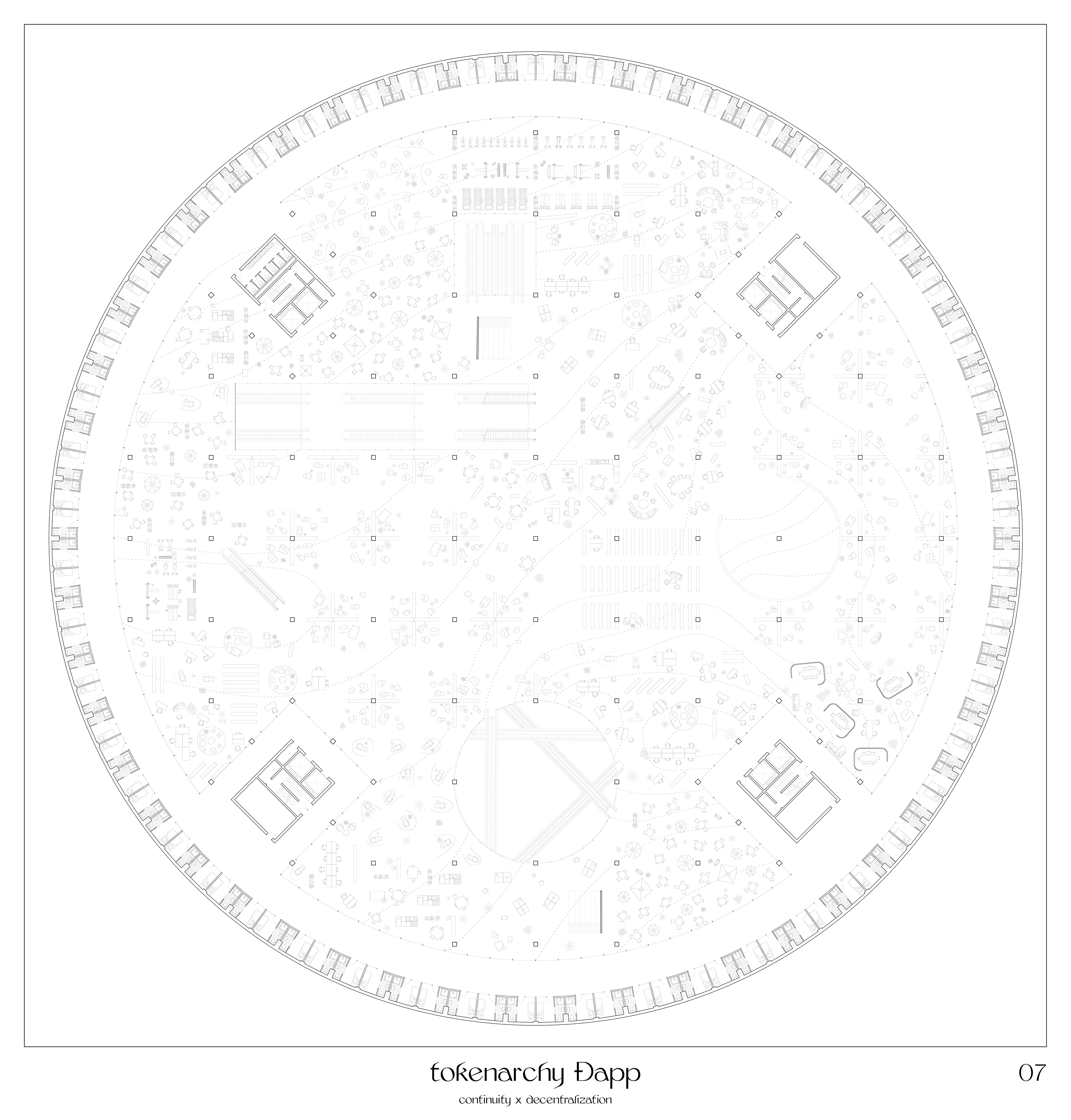


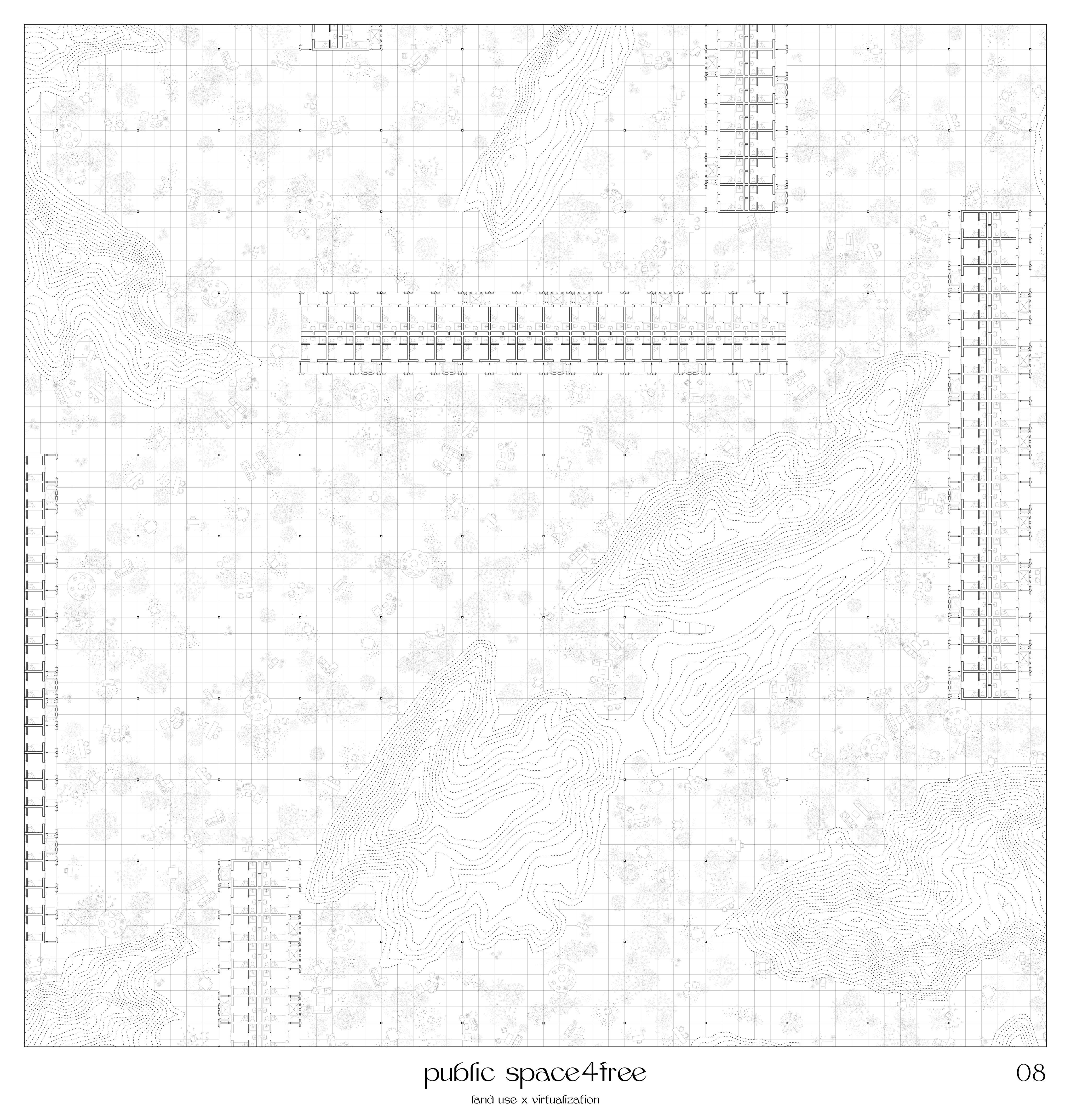




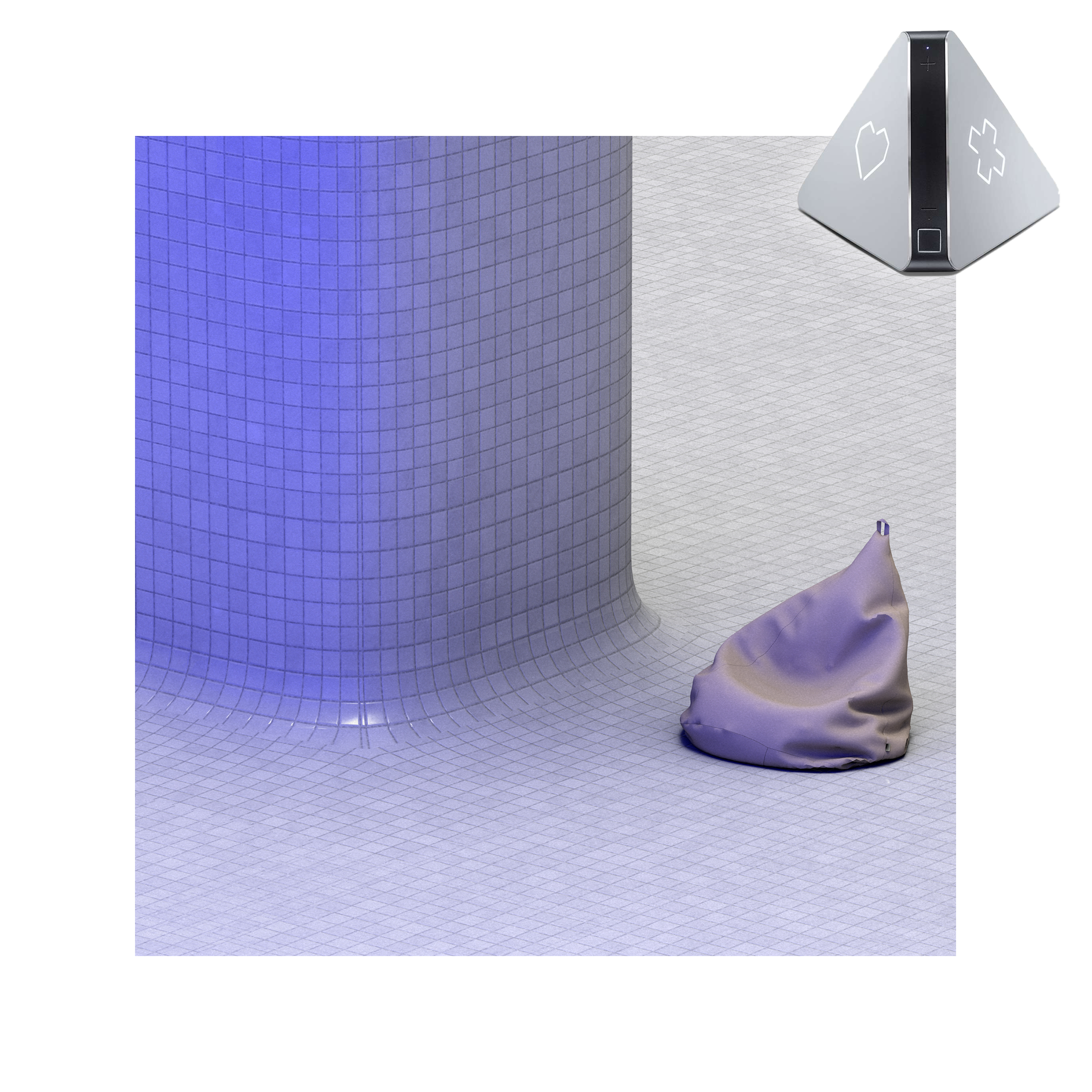
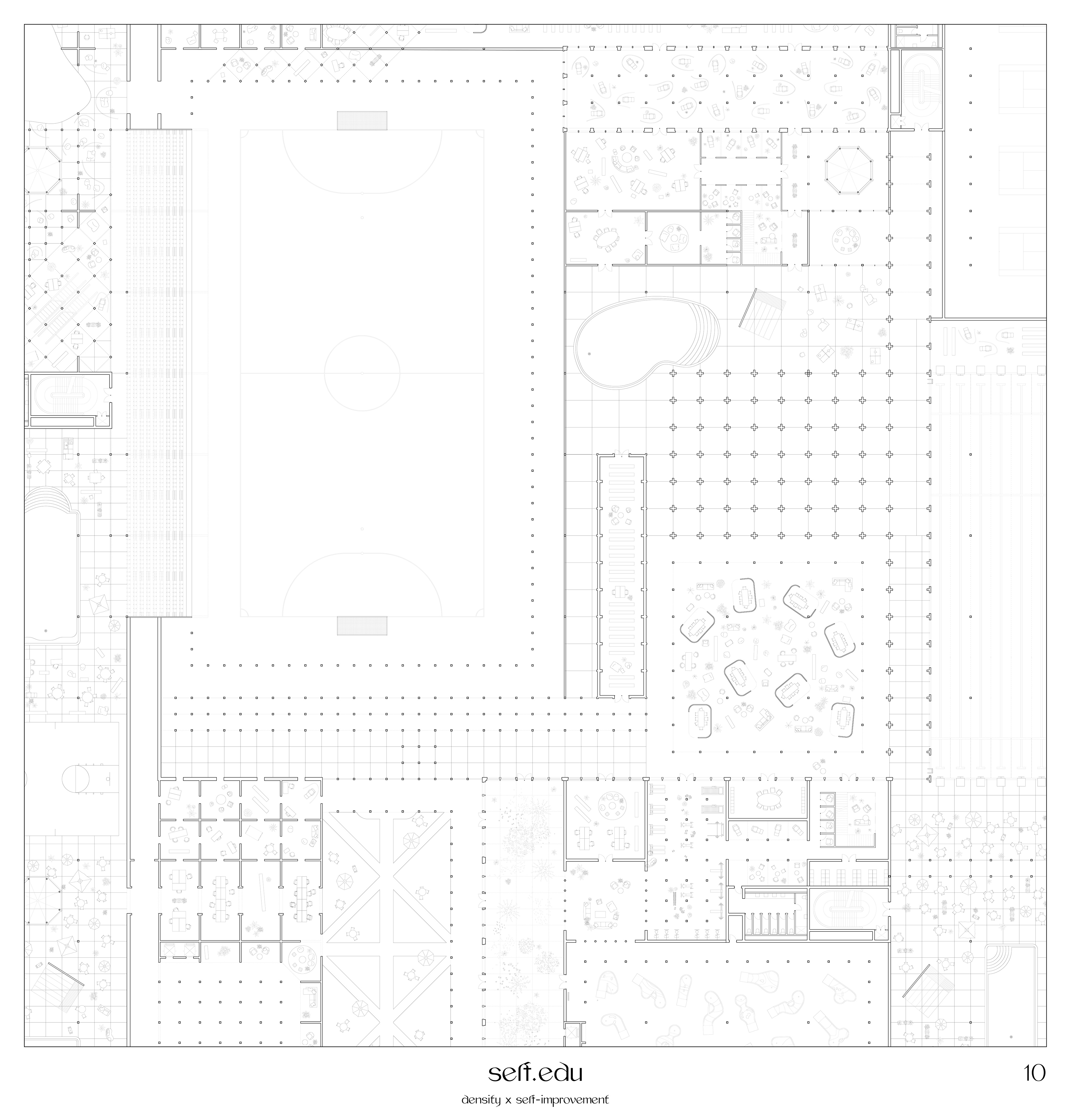
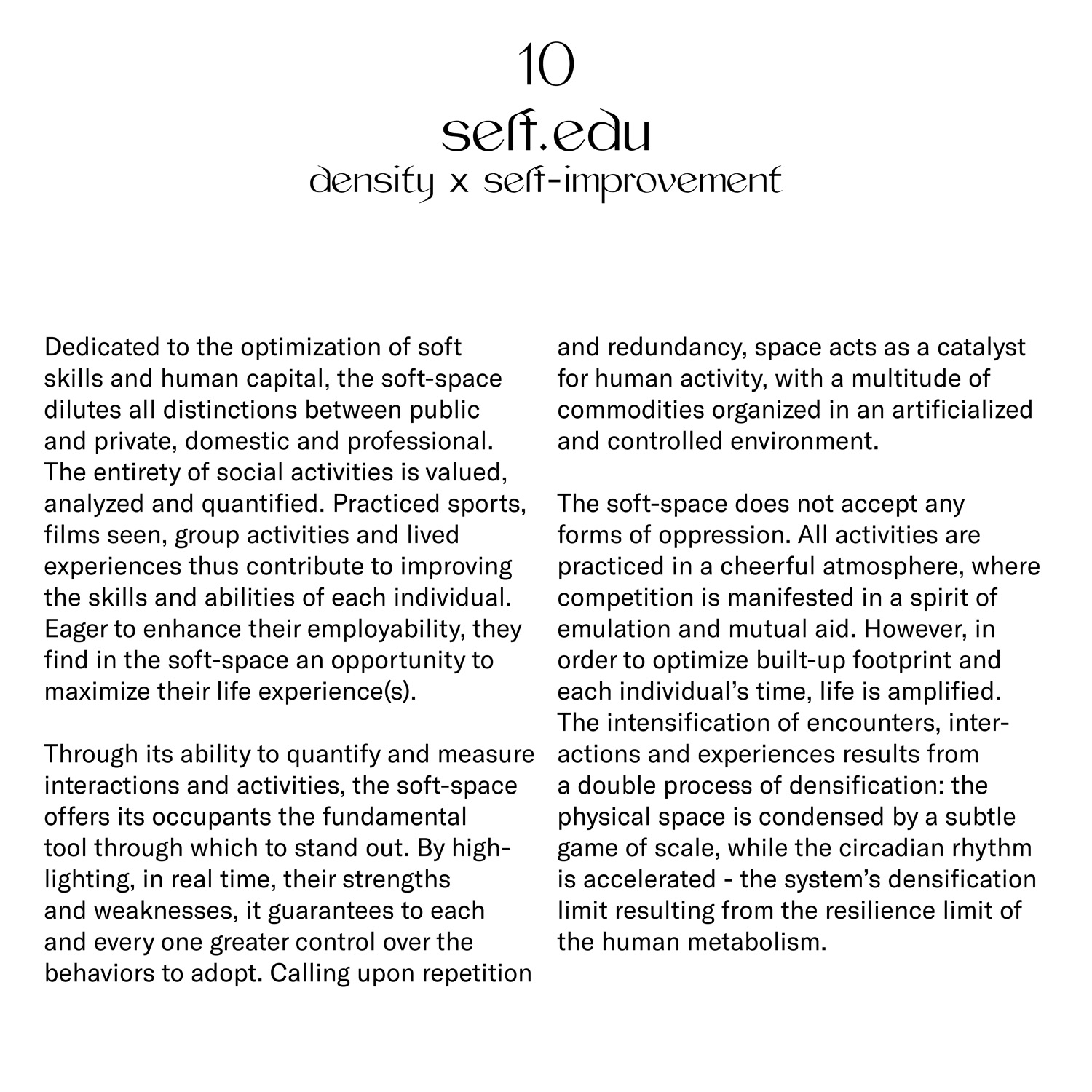
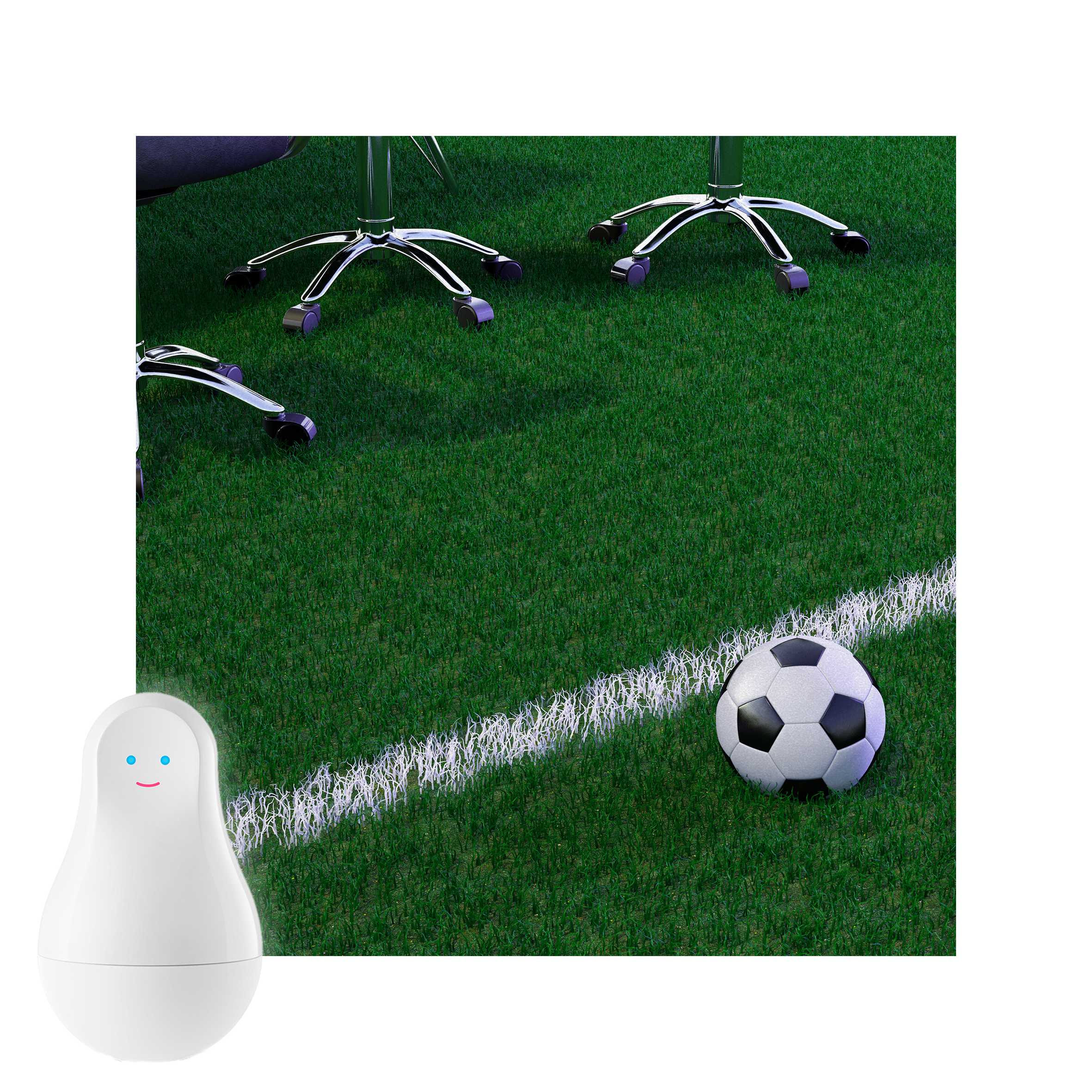
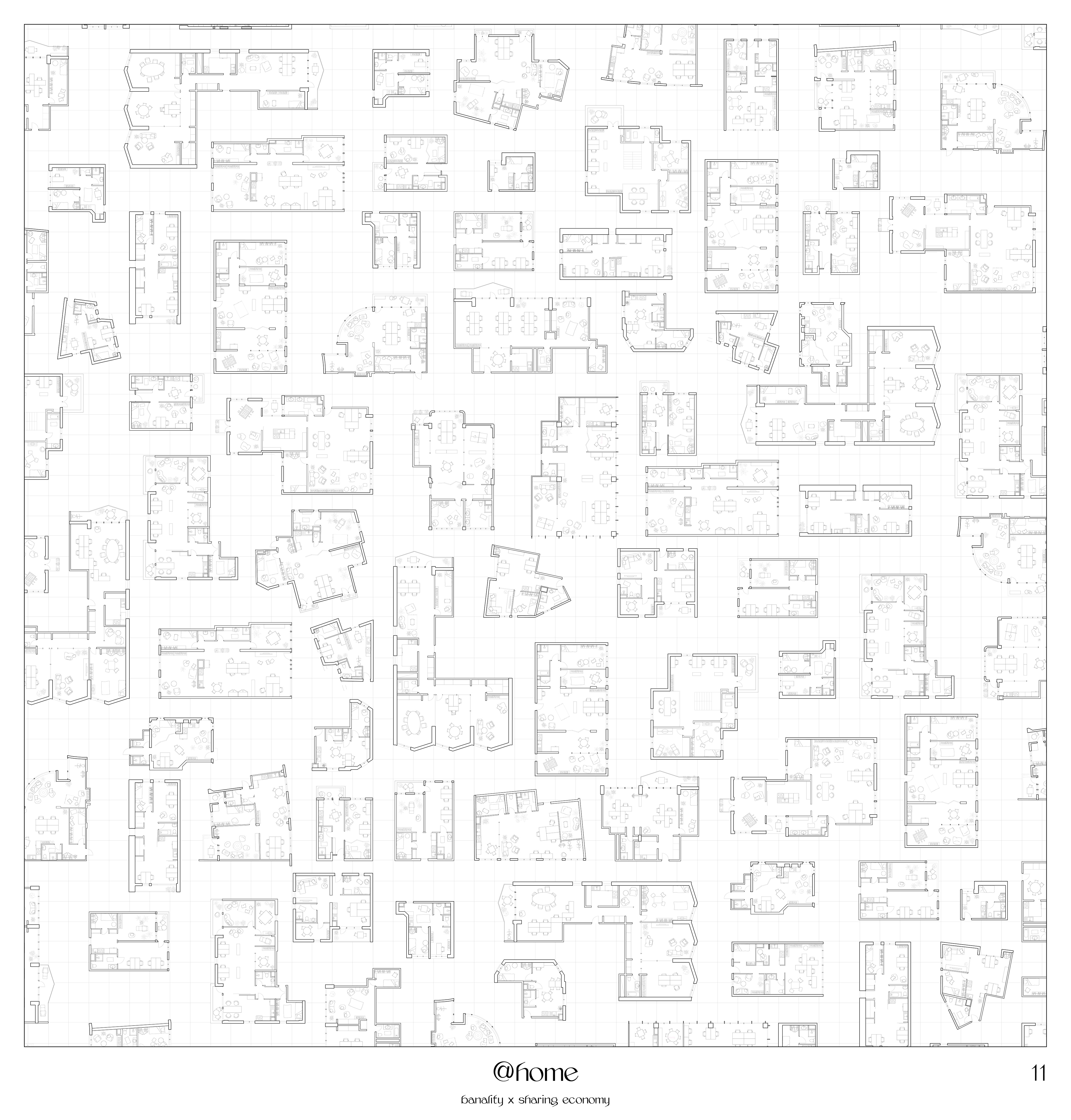


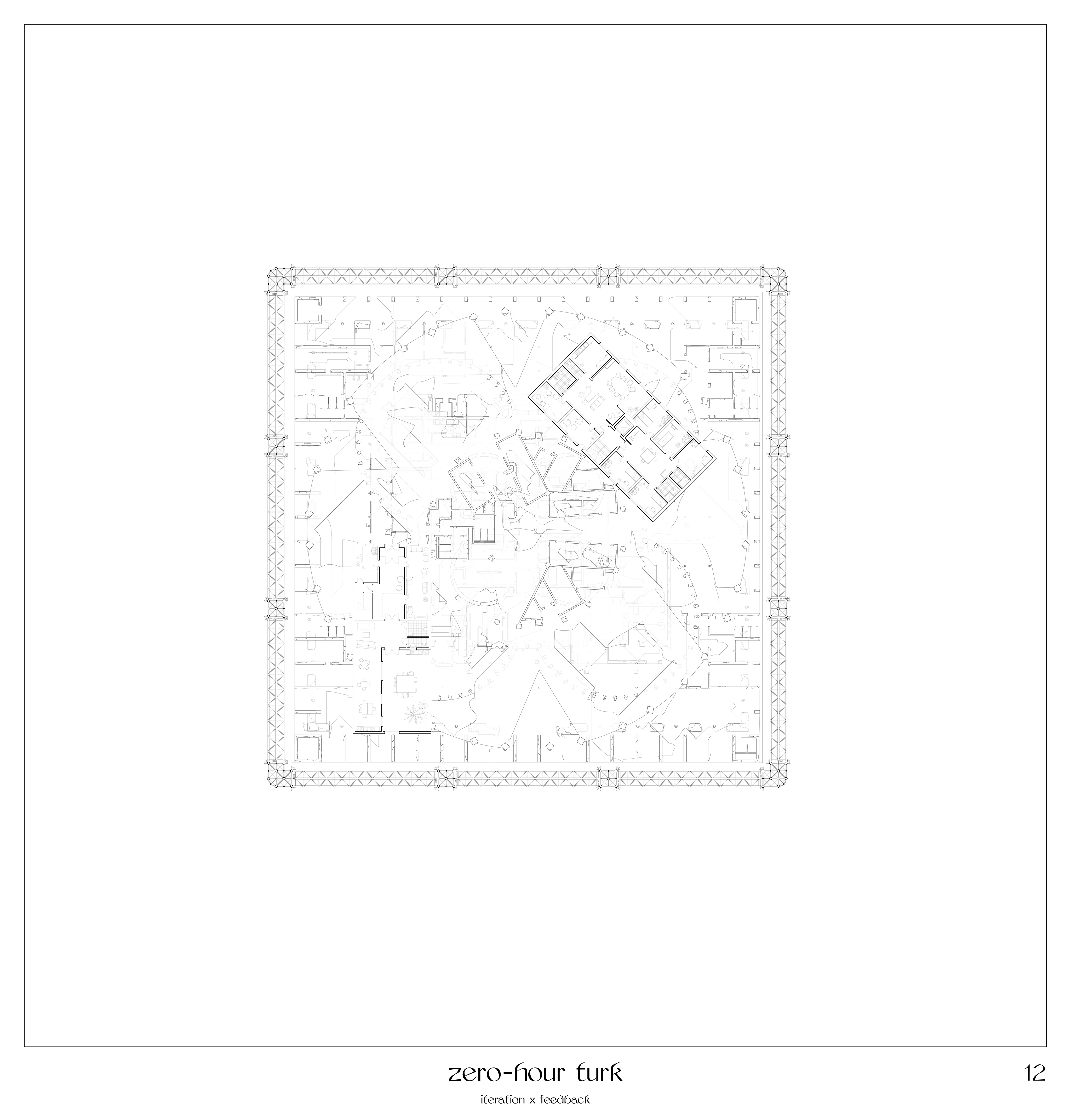


xs/xxl
inhabiting the relics of the anthropocene
with Romain Curnier
Teaching - Computational Workshop L2
Organized by Ahmed Abouelkheir and Thierry Ciblac
Assistant monitor : Samir Boukhalifa
ENSAPM 2020
Teaching - Computational Workshop L2
Organized by Ahmed Abouelkheir and Thierry Ciblac
Assistant monitor : Samir Boukhalifa
ENSAPM 2020
As part of the mandatory computational workshop for second-year students at ENSAPM, the "XS/XXL - Inhabiting the Relics of the Anthropocene" session aims to introduce them to 2D, 3D and parametric design. It serves both as an initiation to modeling and design softwares (Rhino/Grasshopper, Adobe Suite), and as a first opportunity to manipulate representational tools, techniques and their underlying logics.
As a nod to the architecture classic S, M, L, XL1, the session seeks to confront two extreme scales of construction by associating a standard element of architecture to a landscape-scale infrastructure. The XS scale focuses on details and components at the core of architectural practice and design techniques.2 From the door knob to the stair, their scale define how bodies interact with their surroundings and ultimately, characterize the very experience of a given space, from its symbolic perception to its physical apprehension. At the other end of the spectrum, the XXL scale encompasses human-made infrastructures that were built to accomodate our modern way of life. Dividing territories and decorating the lands they inhabit, their scale and technical complexity almost turn them as non-places - unwelcoming spaces devoid of any human activity.3,4 And yet, they are the markers of a new era, and their bodies will mark landscapes for decades to come.5,6 The XS/XXL workshop proposes the students to explore ways to domesticate, to tame these gigantic relics with a playful, formal approach.
After a quick introduction to modeling and representation tools, each group of students is invited to develop a personal project in two phases. In the first phase, they are invited to pick and model an existing remarkable infrastructure among a selection of different contexts and typologies. As a first hands-on modeling experience, it also is the opportunity to understand its historical and geographical context, learn its specificities and identify the possible sites of intervention. The second phase invites the students to pick a traditional element of architecture, and to create a parametric version of it. Starting with the most simple abstraction, they progressively add complexity, playing with parameters such as size, shape, repetition or the reinterpretation of its components to arrive at a variable object that can be used to create interesting spatialities. Finally, they are invited to imagine an in-situ installation, a monumental intervention at the scale of the chosen infrastructure, using the parametric element they developed, with an attention to details and constructing possibilites. After having explored different variations, each group gets to fine-tune one version of the monumental intervention in order to extract various represention documents such plan drawings, sections, or axonometric views.
1. Koolhaas, Rem, Bruce Mau and OMA. S, M, L , XL. New York : Monacelli Press, 1998.
2. Koolhaas, Rem & OMA. Elements of Architecture. Köln : Taschen, 2018.
3. Shibata, Toshio. CONTACTS. Poursuite Editions, 2013.
4. Tabuchi, Eric. EDF - Electricité de France. Poursuite Editions, 2019.
5. Bratton, Benjamin. The Terraforming. Moscou : Strelka Press, 2019.
6. Baichwal, Jennifer et Nicholas de Pencier. Anthropocene - The Human Epoch. USA, 2020.
As a nod to the architecture classic S, M, L, XL1, the session seeks to confront two extreme scales of construction by associating a standard element of architecture to a landscape-scale infrastructure. The XS scale focuses on details and components at the core of architectural practice and design techniques.2 From the door knob to the stair, their scale define how bodies interact with their surroundings and ultimately, characterize the very experience of a given space, from its symbolic perception to its physical apprehension. At the other end of the spectrum, the XXL scale encompasses human-made infrastructures that were built to accomodate our modern way of life. Dividing territories and decorating the lands they inhabit, their scale and technical complexity almost turn them as non-places - unwelcoming spaces devoid of any human activity.3,4 And yet, they are the markers of a new era, and their bodies will mark landscapes for decades to come.5,6 The XS/XXL workshop proposes the students to explore ways to domesticate, to tame these gigantic relics with a playful, formal approach.
After a quick introduction to modeling and representation tools, each group of students is invited to develop a personal project in two phases. In the first phase, they are invited to pick and model an existing remarkable infrastructure among a selection of different contexts and typologies. As a first hands-on modeling experience, it also is the opportunity to understand its historical and geographical context, learn its specificities and identify the possible sites of intervention. The second phase invites the students to pick a traditional element of architecture, and to create a parametric version of it. Starting with the most simple abstraction, they progressively add complexity, playing with parameters such as size, shape, repetition or the reinterpretation of its components to arrive at a variable object that can be used to create interesting spatialities. Finally, they are invited to imagine an in-situ installation, a monumental intervention at the scale of the chosen infrastructure, using the parametric element they developed, with an attention to details and constructing possibilites. After having explored different variations, each group gets to fine-tune one version of the monumental intervention in order to extract various represention documents such plan drawings, sections, or axonometric views.
1. Koolhaas, Rem, Bruce Mau and OMA. S, M, L , XL. New York : Monacelli Press, 1998.
2. Koolhaas, Rem & OMA. Elements of Architecture. Köln : Taschen, 2018.
3. Shibata, Toshio. CONTACTS. Poursuite Editions, 2013.
4. Tabuchi, Eric. EDF - Electricité de France. Poursuite Editions, 2019.
5. Bratton, Benjamin. The Terraforming. Moscou : Strelka Press, 2019.
6. Baichwal, Jennifer et Nicholas de Pencier. Anthropocene - The Human Epoch. USA, 2020.



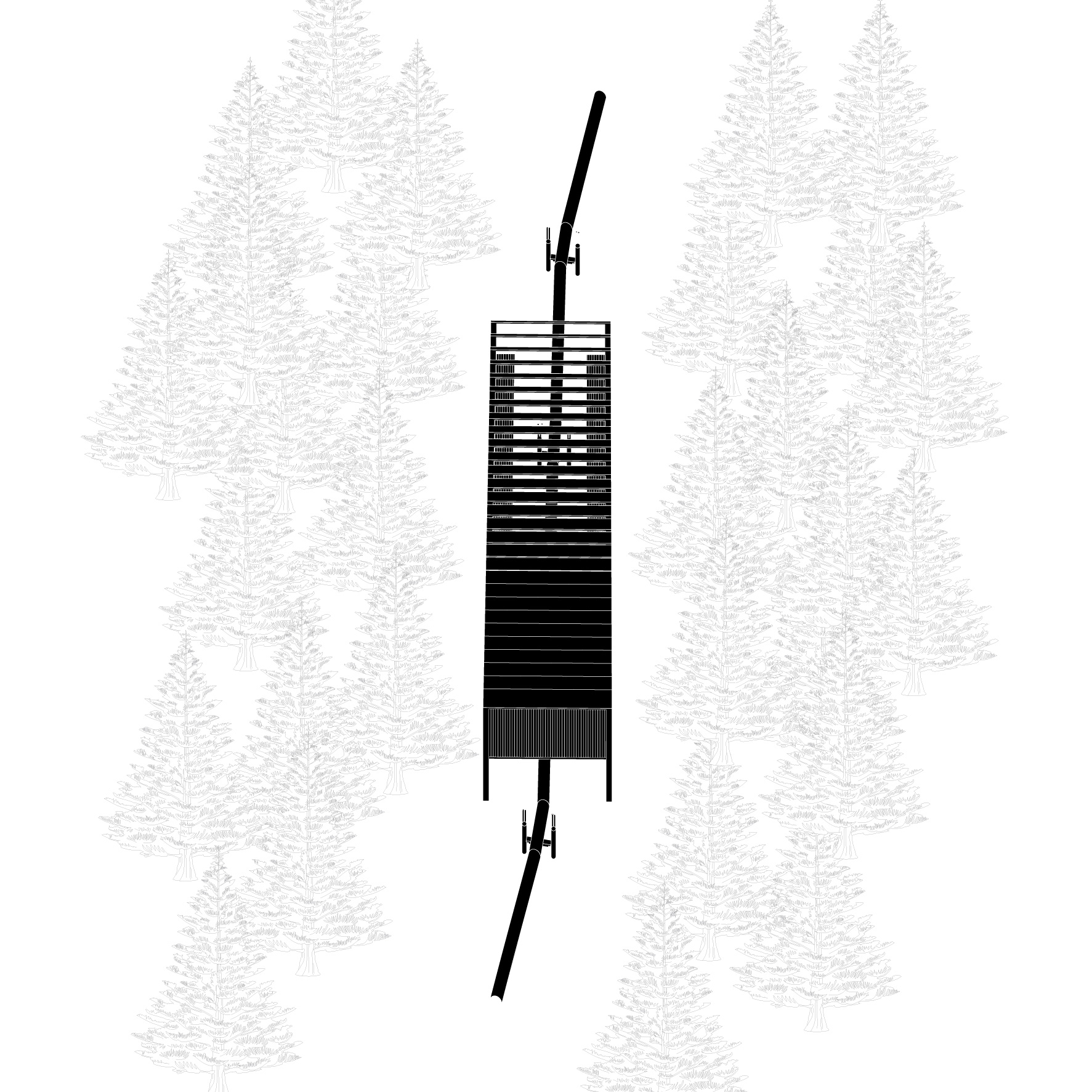




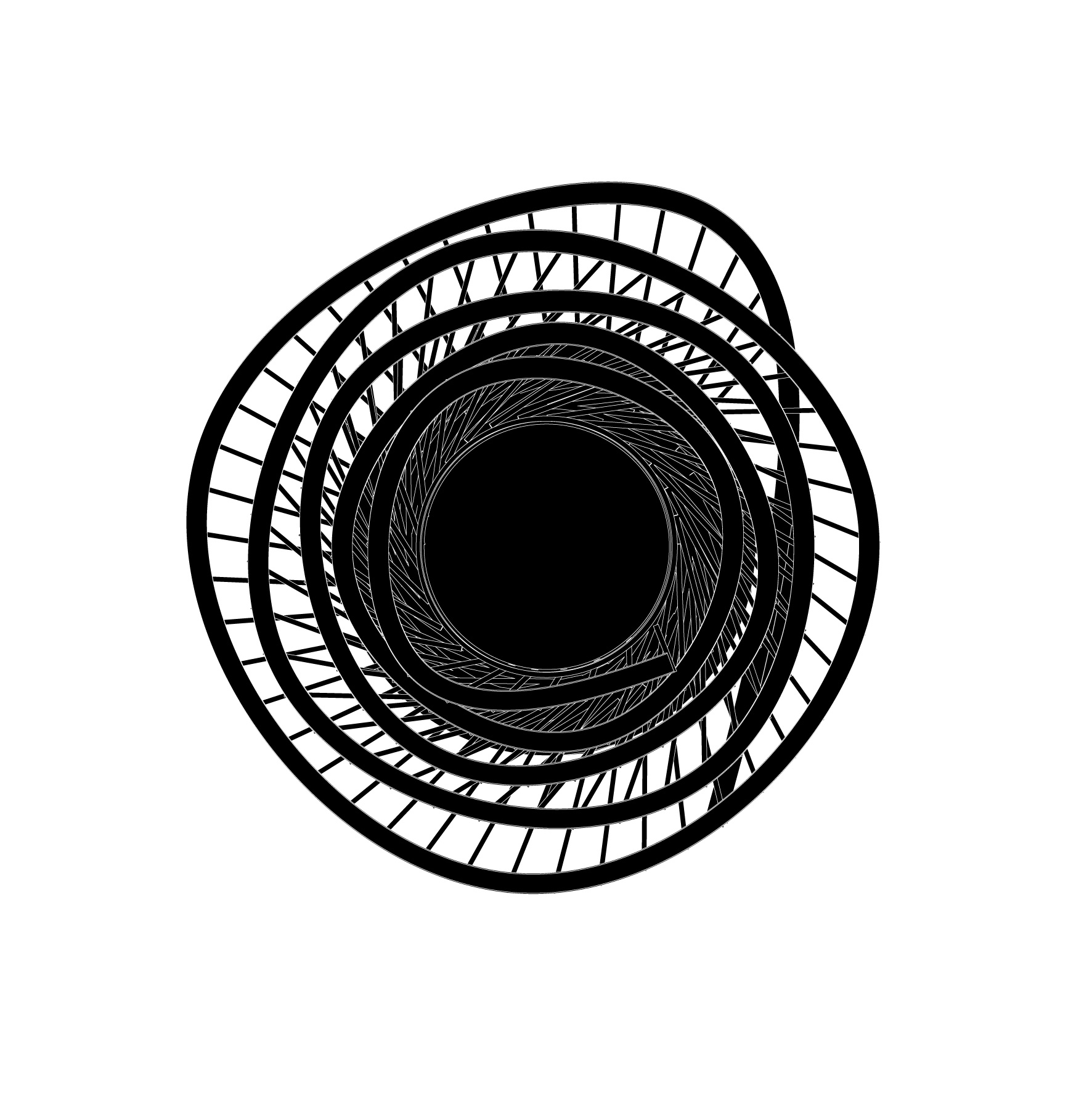


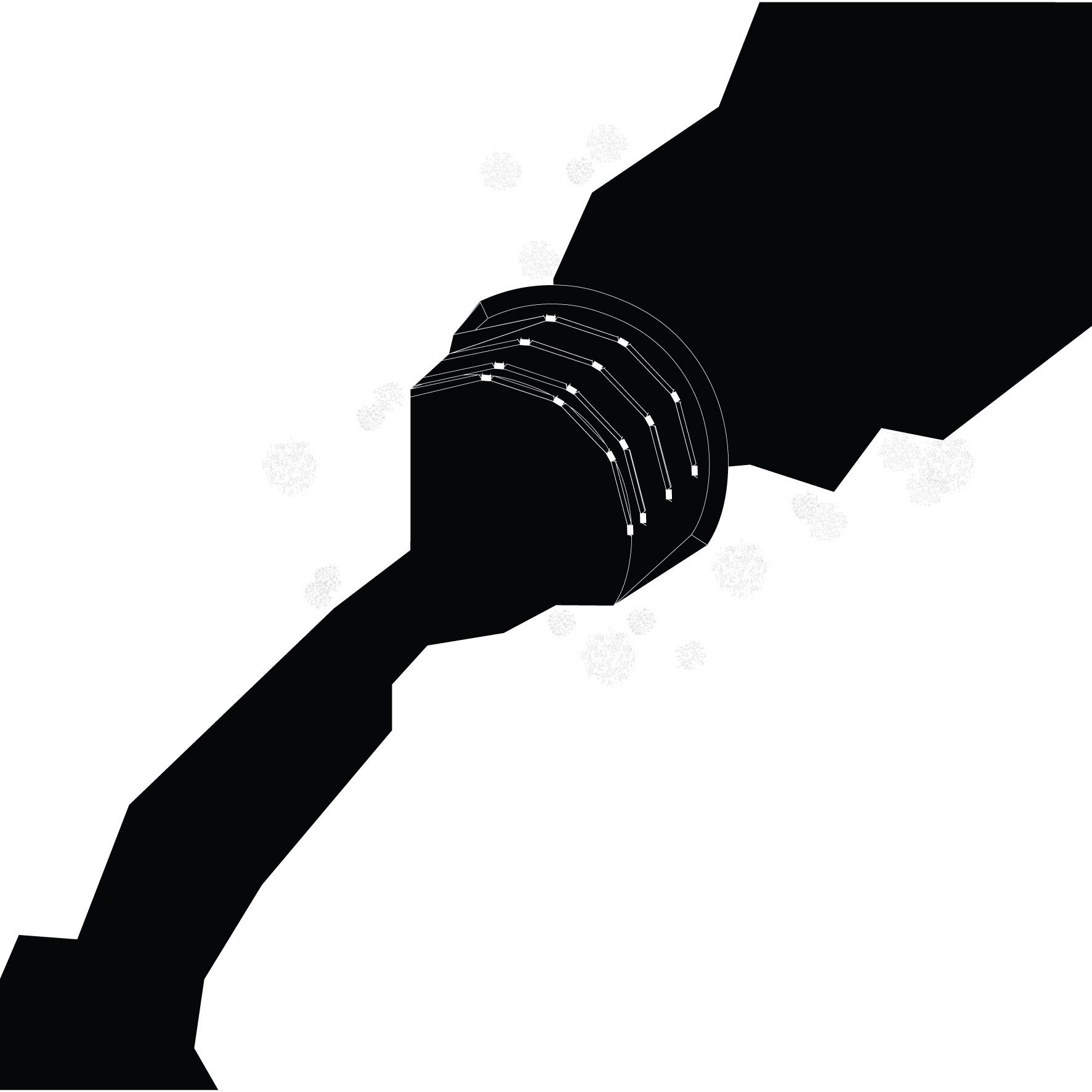


XS/XXL - Students plan views & sections
![]()
![]()
![]()
![]()
![]()
![]()
![]()
![]()
XS/XXL - Students renders








XS/XXL - Students renders
exquisite space(s)
forms and figures, cities and architectures
with Romain Curnier
Teaching - Computational Workshop L2
Organized by Ahmed Abouelkheir and Thierry Ciblac
Assistant monitor : Abderrezak Merabet
ENSAPM 2019
Teaching - Computational Workshop L2
Organized by Ahmed Abouelkheir and Thierry Ciblac
Assistant monitor : Abderrezak Merabet
ENSAPM 2019
As part of the computational workshop "Cubes and iterations", the "Exquisite Space(s) - Forms and figures, cities and architectures" session aims to introduce students to 2D, 3D and parametric design. It serves both as an initiation to modelling and design softwares (Rhino/Grasshopper, Adobe Suite), and as a first opportunity to manipulate representational tools, techniques and their underlying logics.
The session seeks to explore the modes of interaction between collective/shared/public spaces and private/individual spaces. These qualifications, whose significance depends on a given historical and ideological context, are today shaped (among other things) by technological innovations and their introduction in everyday life - in productive spaces as well as in public or domestic spaces. For a few years already, the domestic figure of the home has been challenged, in its productive aspect as well as in its handling of privacy.1,2,3 The sharing and pooling of resources (material, economic, or spatial ones) make now the subject of several researches and experimentations.4,5,6 The session thus proposes to create a shared habitable space with different degrees of privacy. It attempts to question the different modes of interaction between collective and individual spaces, as well as how they are influenced by space partitioning and architectural composition. It first focuses on the influence of the overall form, to then shift towards the different possibilities to qualify a partition.7,8
Using game practice and the constraint of the rule as creative processes, the students collectively compose a common continuous space, made of 12 cubes of 9-meter sides. Inspired by the protocol of the surrealist literary game of the "exquisite corpse", each cube is developed by a pair in three steps. The first phase (Form(s)) is collective : it uses the diagram and its abstraction potential to define a global strategy, a first delimitation between collective spaces and private ones that is dependent on the other groups. The second phase (Figure(s)) is an introduction to algorithmic logics : each group develops a volumetric handling strategy for this partition, progressively making it more complex and parametric by setting up variables in Grasshopper. The third phases consists in the appropriation, development and representation of the cube - after having explored the different parametric variations, each group gets to fine-tune and qualify one version of the habitable space in order to extract various representation documents (floor plans, sections, axonometric views).
1. airbnb pavilion (AYR). "home", in Fulcrum, Issue 96 (June 2, 2014). London : Bedford Press, 2014.
2. Hardt, Michael and Delia Duong Ba Wendel. Destroying Family (Interview), in Family Planning, Harvard Design Magazine, No. 41, 2015.
3. McGuirk, Justin. "Honewell, I'm Home! The Internet of Things and the New Domestic Landscape", in e-flux, n°64, April 2015.
4. Jack Self, Shumi Bose, Finn Williams with åyr, Dogma, Julia King, Hesselbrand - British Pavilion, Venice Biennale- Venise, IT - 2016
5. Dogma + Realism Working Group. "Production, Reproduction, Co-operation : The Villa from 'Negative Utopia' to Communal House", in Communal Villa: Production and Reproduction in Artists’ Housing. Leipzig: Spector Books/Haus der Kulturen der Welt, 2016, pp 13-31
6. Stavrides, Stavros. "Common Space as Threshold Space : Urban Commoning in Struggles to Re-appropriate Public Space", in Commoning as Differentiated Publicness, Footprint, Spring 2015, pp 9-20.
7. Aureli, Pier Vittorio. "Toward the Archipelago", in The Possibility of an Absolute Architecture. MIT Press : Cambridge, 2011, pp 1-46.
8. Krier, Rob. Urban Space. Academy Editions : London, 1979.
The session seeks to explore the modes of interaction between collective/shared/public spaces and private/individual spaces. These qualifications, whose significance depends on a given historical and ideological context, are today shaped (among other things) by technological innovations and their introduction in everyday life - in productive spaces as well as in public or domestic spaces. For a few years already, the domestic figure of the home has been challenged, in its productive aspect as well as in its handling of privacy.1,2,3 The sharing and pooling of resources (material, economic, or spatial ones) make now the subject of several researches and experimentations.4,5,6 The session thus proposes to create a shared habitable space with different degrees of privacy. It attempts to question the different modes of interaction between collective and individual spaces, as well as how they are influenced by space partitioning and architectural composition. It first focuses on the influence of the overall form, to then shift towards the different possibilities to qualify a partition.7,8
Using game practice and the constraint of the rule as creative processes, the students collectively compose a common continuous space, made of 12 cubes of 9-meter sides. Inspired by the protocol of the surrealist literary game of the "exquisite corpse", each cube is developed by a pair in three steps. The first phase (Form(s)) is collective : it uses the diagram and its abstraction potential to define a global strategy, a first delimitation between collective spaces and private ones that is dependent on the other groups. The second phase (Figure(s)) is an introduction to algorithmic logics : each group develops a volumetric handling strategy for this partition, progressively making it more complex and parametric by setting up variables in Grasshopper. The third phases consists in the appropriation, development and representation of the cube - after having explored the different parametric variations, each group gets to fine-tune and qualify one version of the habitable space in order to extract various representation documents (floor plans, sections, axonometric views).
1. airbnb pavilion (AYR). "home", in Fulcrum, Issue 96 (June 2, 2014). London : Bedford Press, 2014.
2. Hardt, Michael and Delia Duong Ba Wendel. Destroying Family (Interview), in Family Planning, Harvard Design Magazine, No. 41, 2015.
3. McGuirk, Justin. "Honewell, I'm Home! The Internet of Things and the New Domestic Landscape", in e-flux, n°64, April 2015.
4. Jack Self, Shumi Bose, Finn Williams with åyr, Dogma, Julia King, Hesselbrand - British Pavilion, Venice Biennale- Venise, IT - 2016
5. Dogma + Realism Working Group. "Production, Reproduction, Co-operation : The Villa from 'Negative Utopia' to Communal House", in Communal Villa: Production and Reproduction in Artists’ Housing. Leipzig: Spector Books/Haus der Kulturen der Welt, 2016, pp 13-31
6. Stavrides, Stavros. "Common Space as Threshold Space : Urban Commoning in Struggles to Re-appropriate Public Space", in Commoning as Differentiated Publicness, Footprint, Spring 2015, pp 9-20.
7. Aureli, Pier Vittorio. "Toward the Archipelago", in The Possibility of an Absolute Architecture. MIT Press : Cambridge, 2011, pp 1-46.
8. Krier, Rob. Urban Space. Academy Editions : London, 1979.

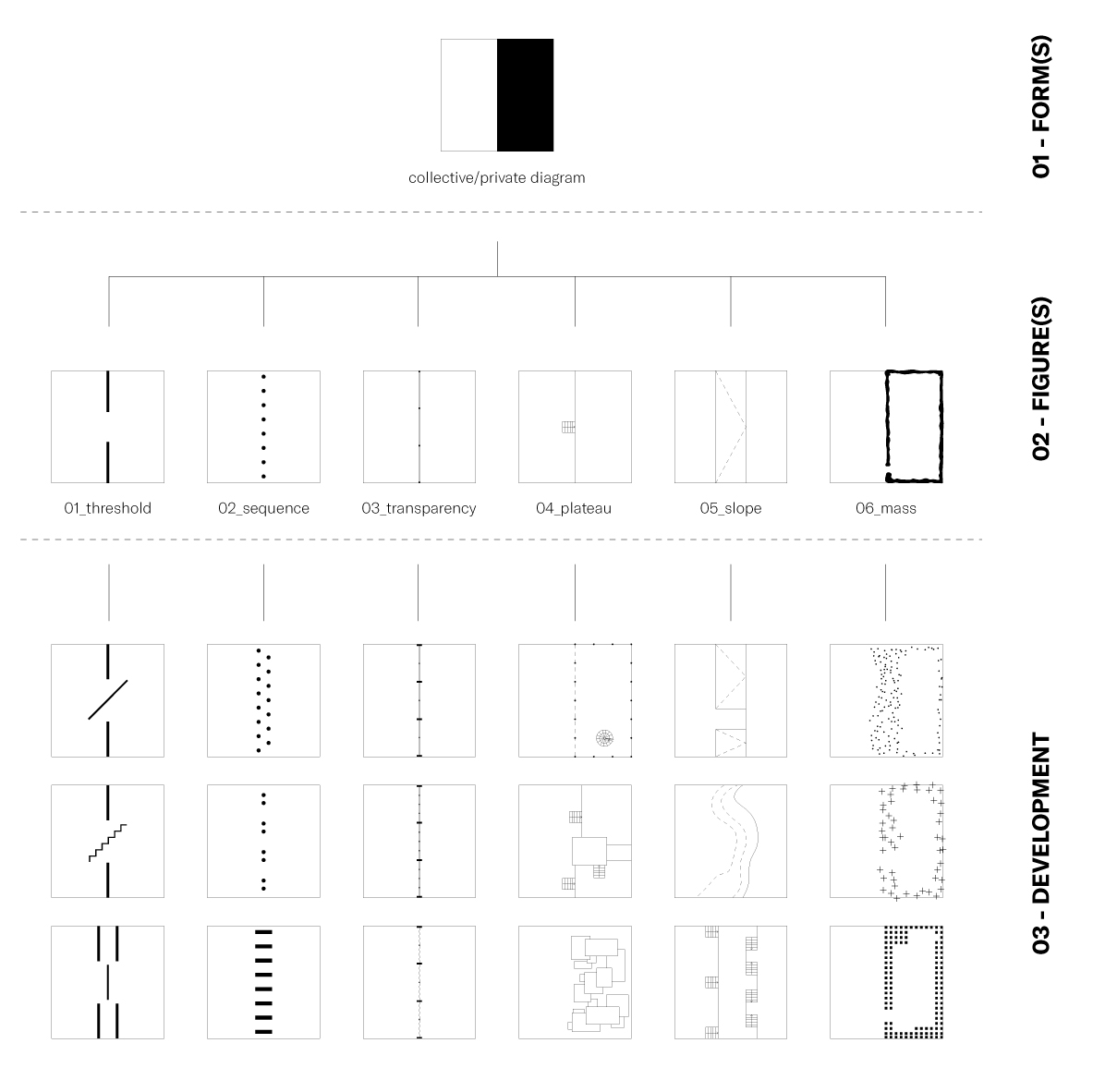


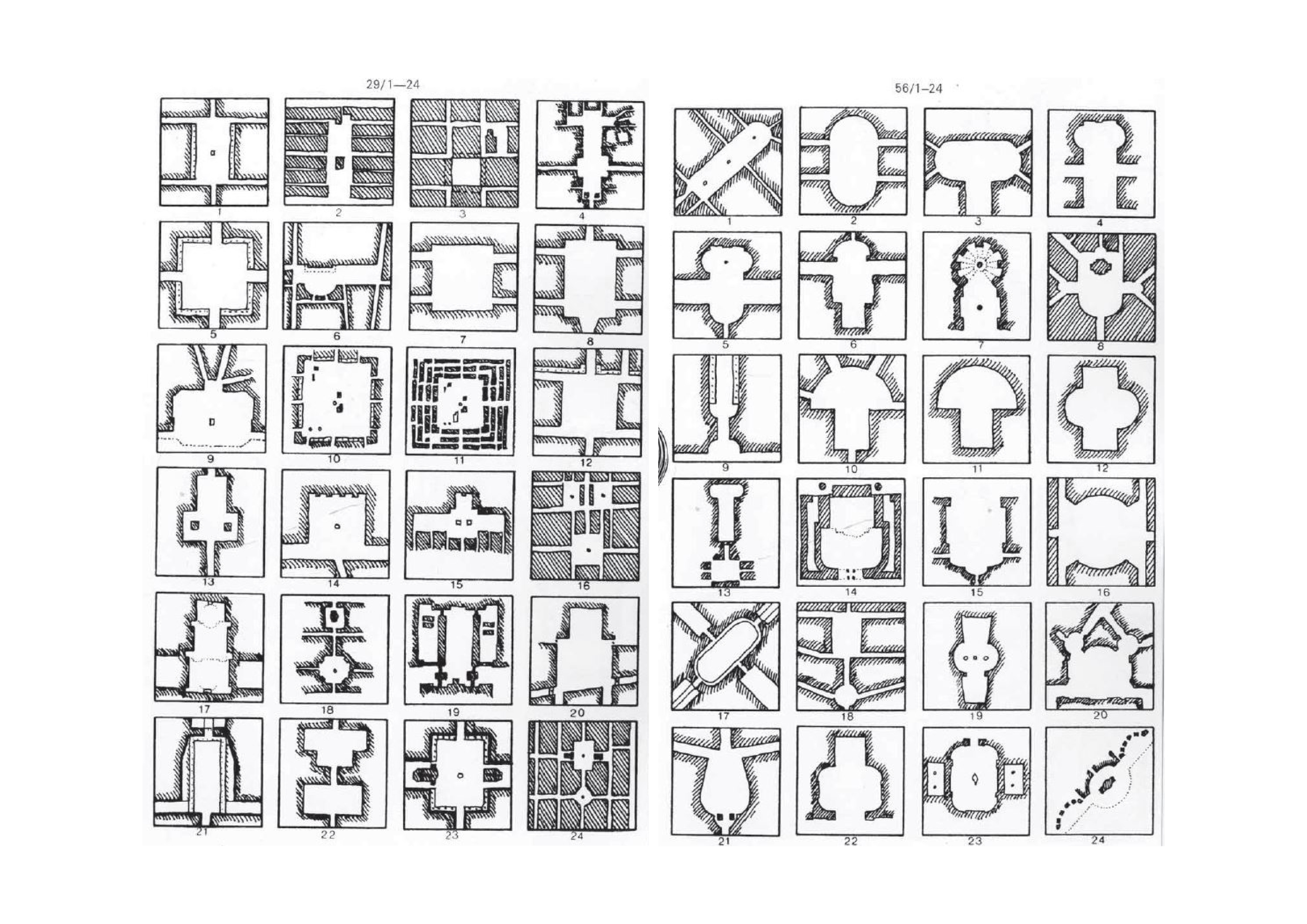



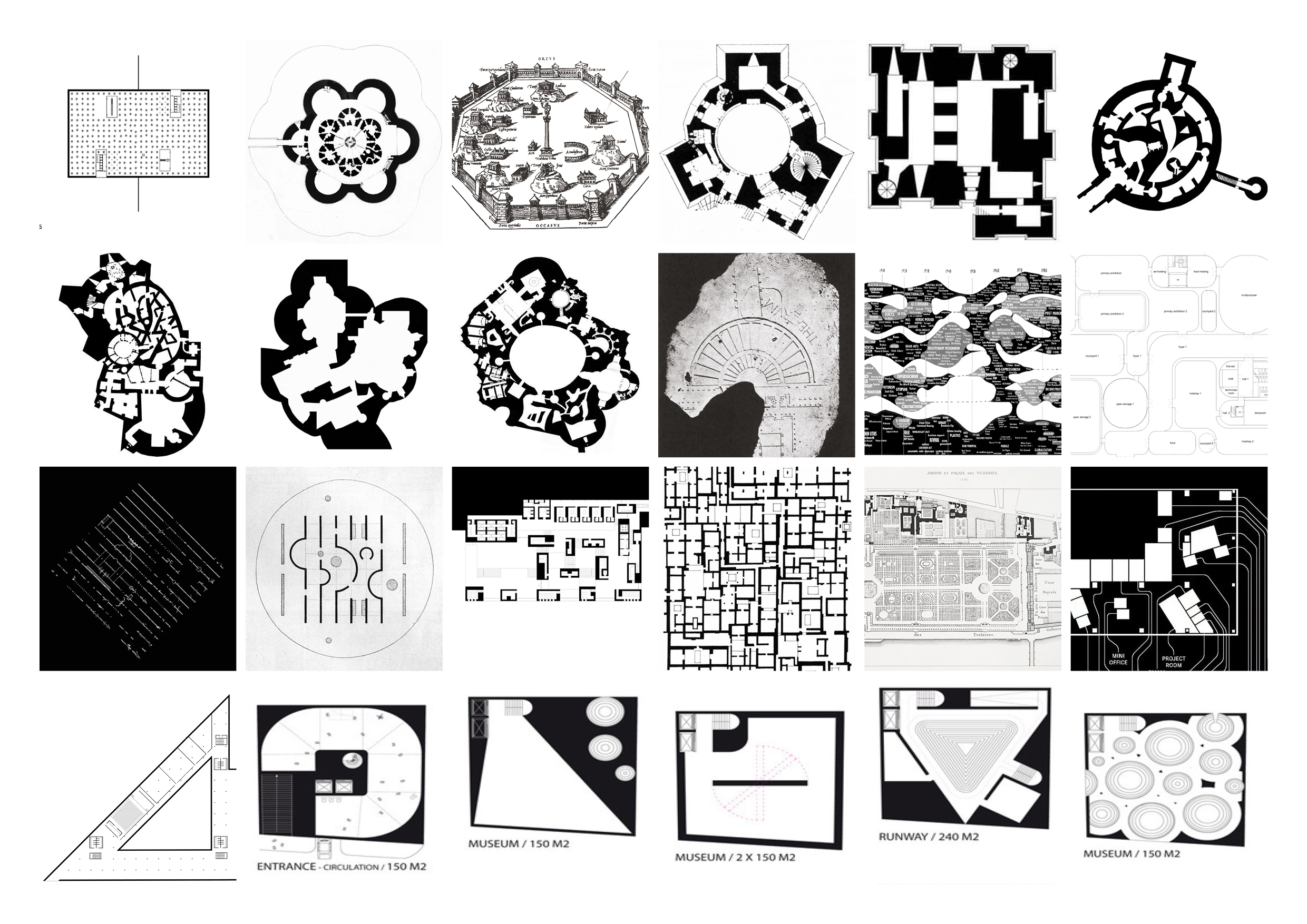
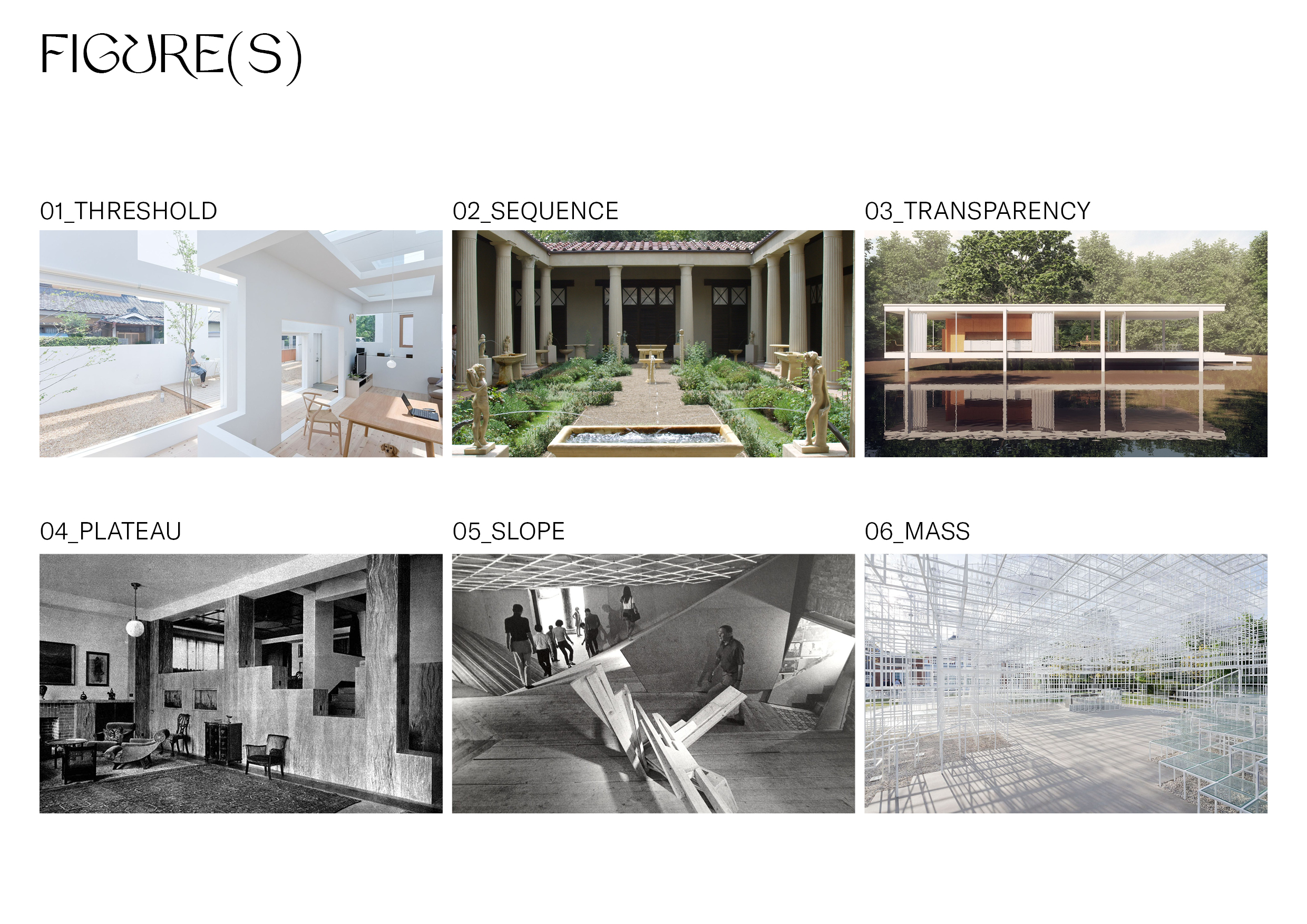
Form(s) and Figure(s) - Examples
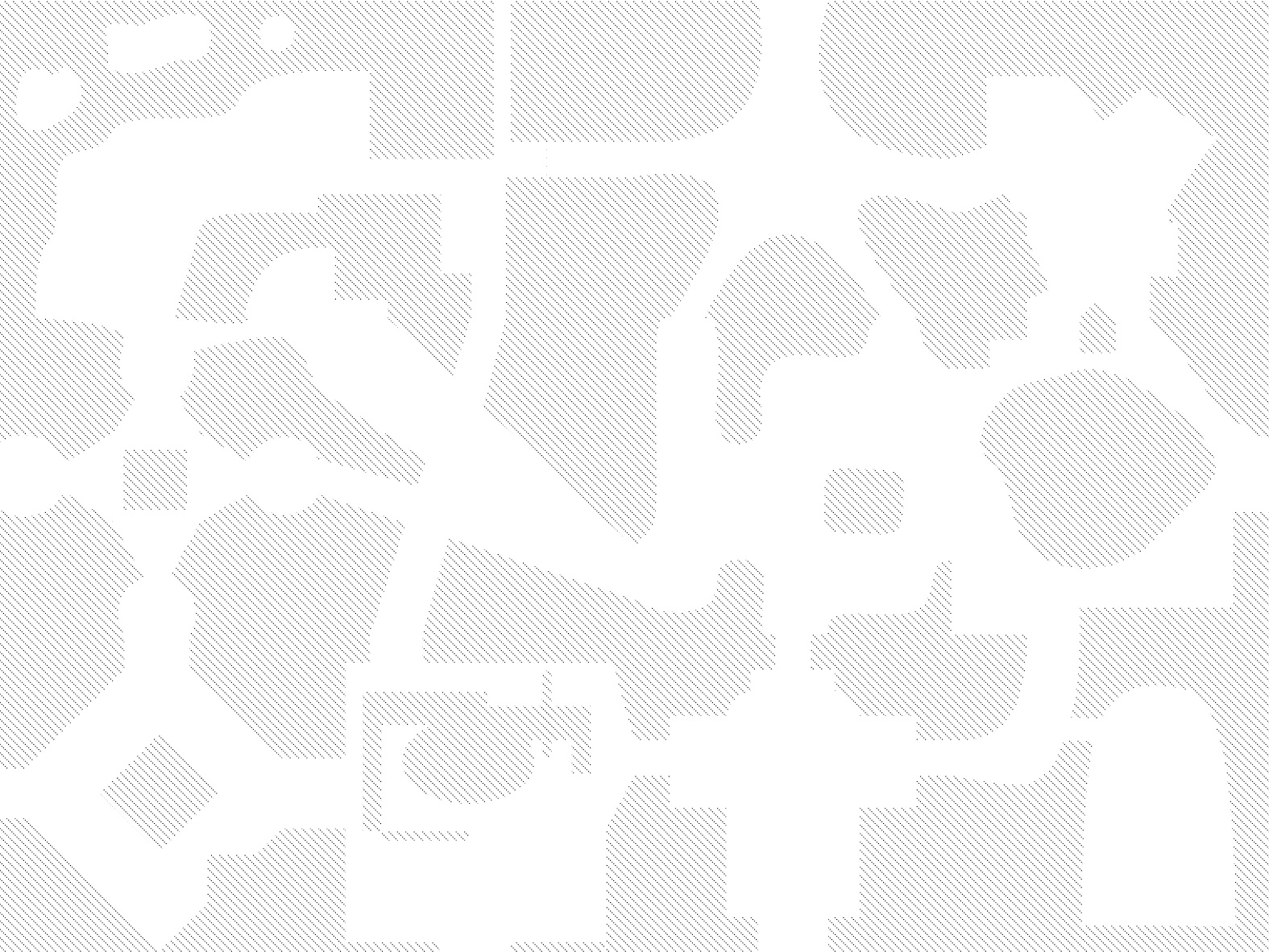
Exquisite Space(s) - Students diagrams
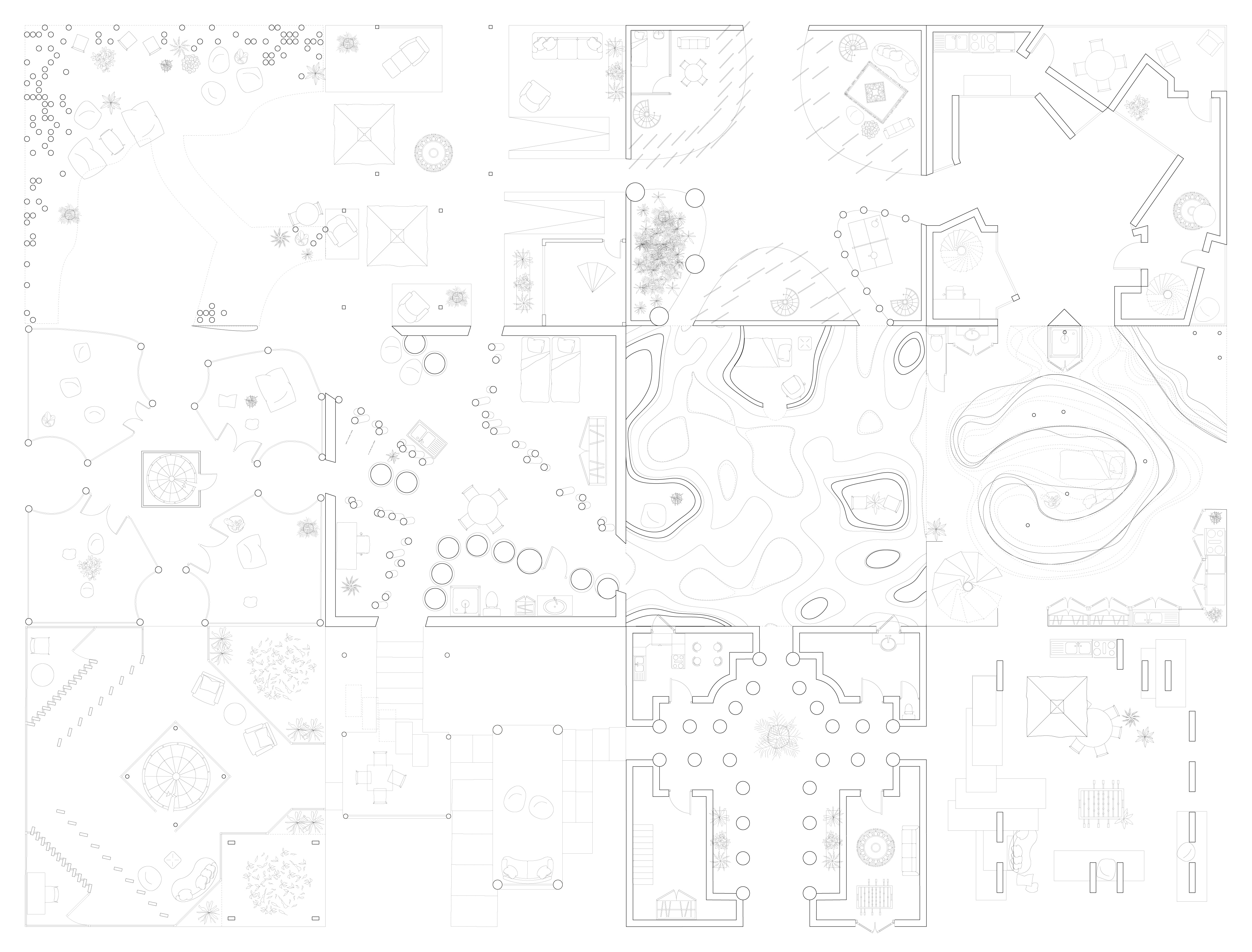
Exquisite Space(s) - Students floor plans
beyond virtualization
virtual reality, collective intelligence and post-capitalism
Master's Thesis
Supervisors : Christian Girard, Mario Carpo
ENSAPM 2018
Supervisors : Christian Girard, Mario Carpo
ENSAPM 2018
Beyond Virtualization aims to consider the social and political impacts of the democratization of virtual and augmented reality technologies, as well as their repercussion on architecture and the design process. A particular importance is given to the transformation of social and cognitive modes of organization.
New technologies are often presented as salutary and emancipatory, before being progressively absorbed by governments or corporations as tools of control, exploitation or value creation. However, the development of Internet in the 1990s stimulated the emergence of new distributed organization models, the democratization of production and distribution tools, as well as the exchange of knowledge and information. In order to assimilate, reinterpret or orient these technologies towards a collective vision, it is crucial to understand their functioning, their implications and their limits. Virtual immersion, praised and forgotten in the 1990s, recently witnessed a renewed optimism following the public launch of Head-Mounted Displays (HMD) in 2016. Following a brief presentation of virtual reality technologies and their relevance in architecture, the paper then considers their capacity to transform human intellect and environmental perception. In the second part, it focuses on the implications of virtual reality regarding architectural practice and radical politics, and questions the possibility to orient its use to facilitate the development of alternative models founded in collaboration and collective intelligence.
Virtual reality, as a representational tool and communication technology, is nothing more than an additional interface allowing us to explore the virtual at large - a concept predating any digital technology. Of particular interest to architecture is the ability to experiment with the notion of space : its perception, its design, its representation, its discontinuity, its temporality or the way it relates to the body. The involvement of the body makes virtual reality a multi-sensory interface, offering new ways to apprehend information and immaterial entities, temporarily distancing itself from reality to better understand it. However, the manipulation and reinterpretation of the psychological, cognitive, identitary, social and bodily notions which make its strength raise some serious ethical considerations, and foresee the possibility of a complete alienation to virtual delights.
Inspecting its use in arts inform us on its ability to foster collaboration - a crucial component of architectural design, as well as on the stirring complexity resulting from an interconnection between physical and virtual spaces. By offering the ability to navigate across different layers of reality, virtual reality technologies radically change how we relate to the built environment - and thus the role of the architect. While the consideration of Internet evolved from a technical tool to the constitutive technology of a new socio-political context, it would seem incomplete to consider virtual reality for what it is without considering the way it relates to society and the changes brought by its widespread adoption. The social, economical and political context in which it evolves is altered by virtual reality, as much as it influences its development. This research paper aims to consider how virtual reality can promote the elaboration and implementation of alternative models to an entrenched system, founded on collective organization, resource sharing, interdependence and collaboration by its potential to augment our intellectual abilities and deepen our understanding of complex systems. Ultimately, it considers virtual reality as a tool for experimentation, questioning the values we stand for and the very notions of mankind and identity. It attempts to draw development strategies for a responsible and aware use of virtual reality, in order to make the most out of it while limiting its use to ends of control and value creation.
︎︎︎ Download [FR] [32.7 MB]
︎︎︎ Download [compressed] [FR] [6.15 MB]
Publications :
︎︎︎Virtual Dream Center, edited by Jean-Baptiste Lenglet and Jessica Boubetra. Web, March 2018.
http://virtualdreamcenter.xyz/en/bookshop/
Credits :
Cover background by Luka Lavrenci
New technologies are often presented as salutary and emancipatory, before being progressively absorbed by governments or corporations as tools of control, exploitation or value creation. However, the development of Internet in the 1990s stimulated the emergence of new distributed organization models, the democratization of production and distribution tools, as well as the exchange of knowledge and information. In order to assimilate, reinterpret or orient these technologies towards a collective vision, it is crucial to understand their functioning, their implications and their limits. Virtual immersion, praised and forgotten in the 1990s, recently witnessed a renewed optimism following the public launch of Head-Mounted Displays (HMD) in 2016. Following a brief presentation of virtual reality technologies and their relevance in architecture, the paper then considers their capacity to transform human intellect and environmental perception. In the second part, it focuses on the implications of virtual reality regarding architectural practice and radical politics, and questions the possibility to orient its use to facilitate the development of alternative models founded in collaboration and collective intelligence.
Virtual reality, as a representational tool and communication technology, is nothing more than an additional interface allowing us to explore the virtual at large - a concept predating any digital technology. Of particular interest to architecture is the ability to experiment with the notion of space : its perception, its design, its representation, its discontinuity, its temporality or the way it relates to the body. The involvement of the body makes virtual reality a multi-sensory interface, offering new ways to apprehend information and immaterial entities, temporarily distancing itself from reality to better understand it. However, the manipulation and reinterpretation of the psychological, cognitive, identitary, social and bodily notions which make its strength raise some serious ethical considerations, and foresee the possibility of a complete alienation to virtual delights.
Inspecting its use in arts inform us on its ability to foster collaboration - a crucial component of architectural design, as well as on the stirring complexity resulting from an interconnection between physical and virtual spaces. By offering the ability to navigate across different layers of reality, virtual reality technologies radically change how we relate to the built environment - and thus the role of the architect. While the consideration of Internet evolved from a technical tool to the constitutive technology of a new socio-political context, it would seem incomplete to consider virtual reality for what it is without considering the way it relates to society and the changes brought by its widespread adoption. The social, economical and political context in which it evolves is altered by virtual reality, as much as it influences its development. This research paper aims to consider how virtual reality can promote the elaboration and implementation of alternative models to an entrenched system, founded on collective organization, resource sharing, interdependence and collaboration by its potential to augment our intellectual abilities and deepen our understanding of complex systems. Ultimately, it considers virtual reality as a tool for experimentation, questioning the values we stand for and the very notions of mankind and identity. It attempts to draw development strategies for a responsible and aware use of virtual reality, in order to make the most out of it while limiting its use to ends of control and value creation.
︎︎︎ Download [FR] [32.7 MB]
︎︎︎ Download [compressed] [FR] [6.15 MB]
Publications :
︎︎︎Virtual Dream Center, edited by Jean-Baptiste Lenglet and Jessica Boubetra. Web, March 2018.
http://virtualdreamcenter.xyz/en/bookshop/
Credits :
Cover background by Luka Lavrenci

